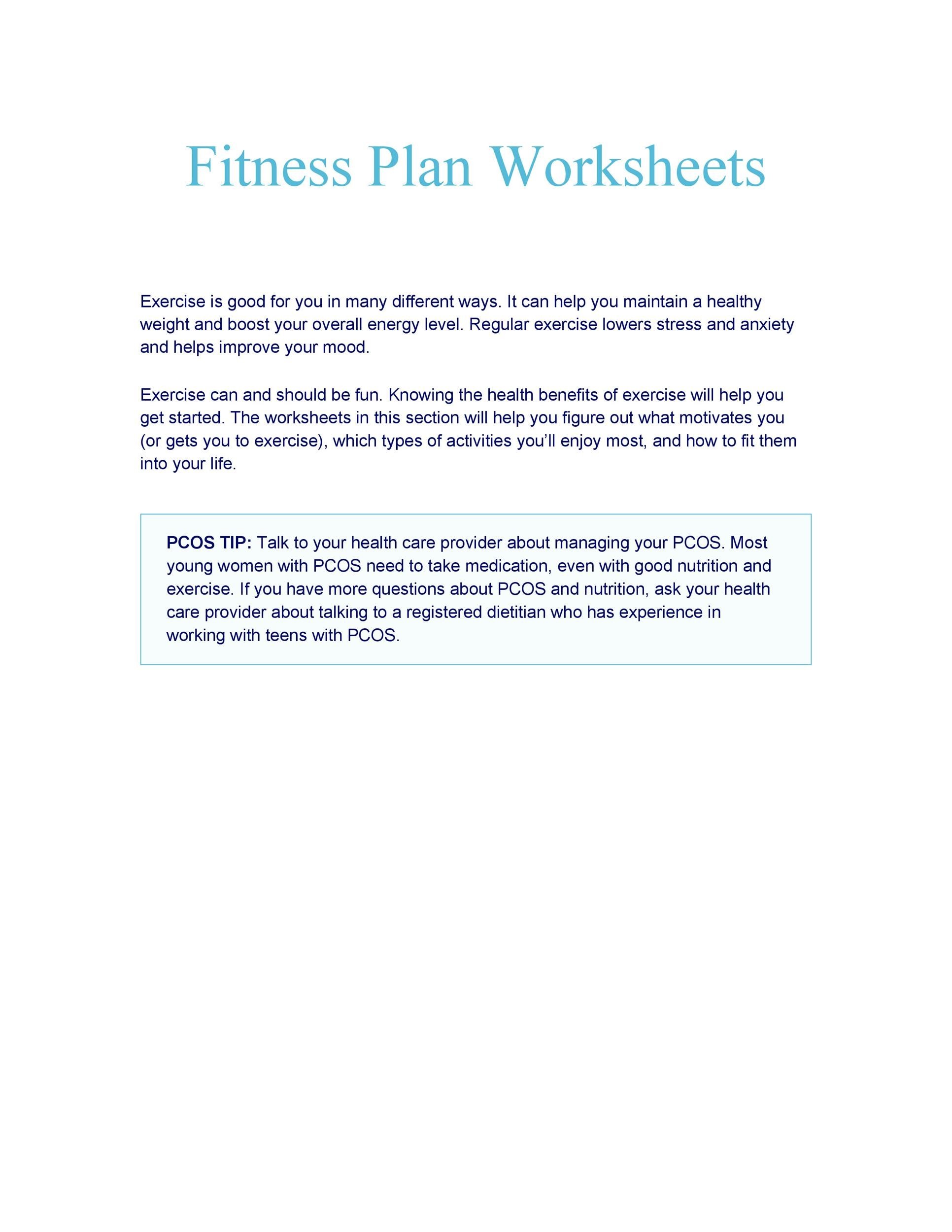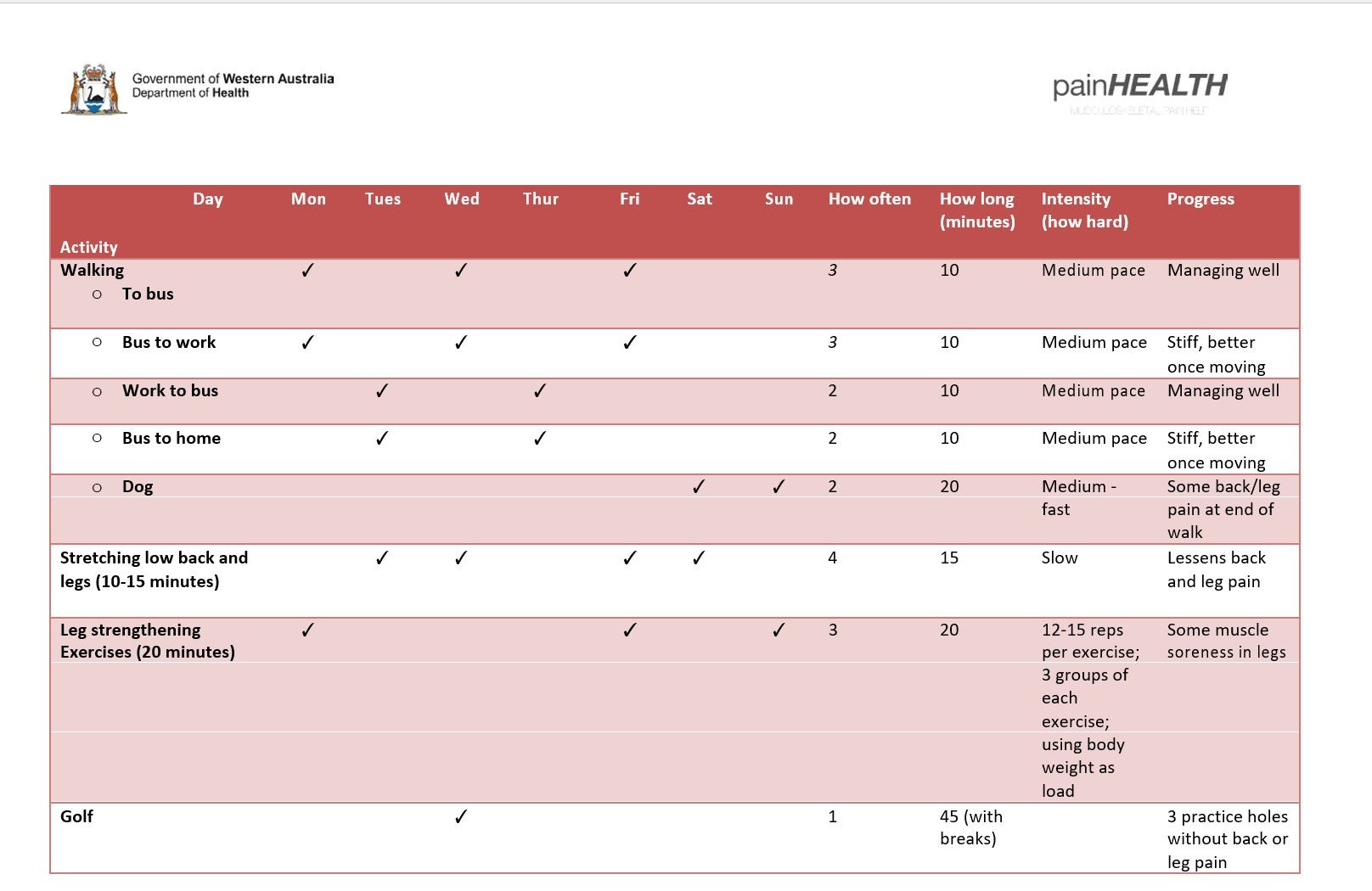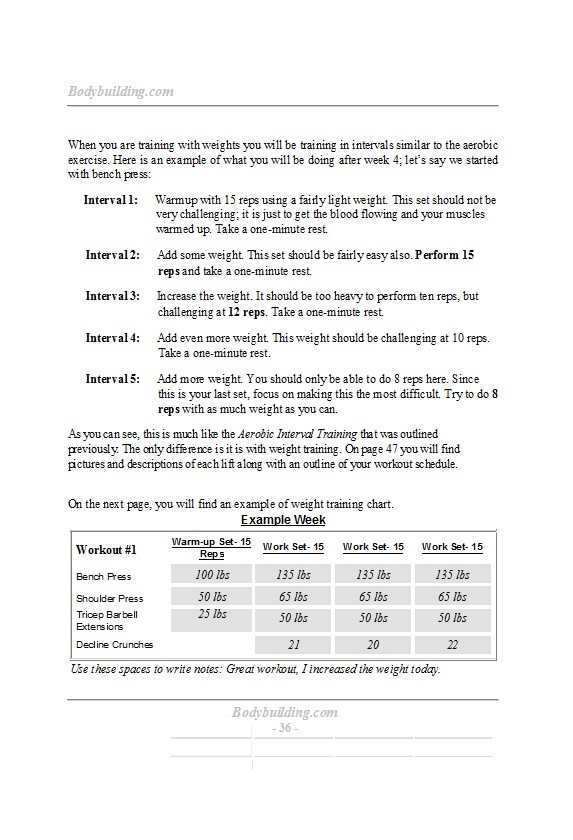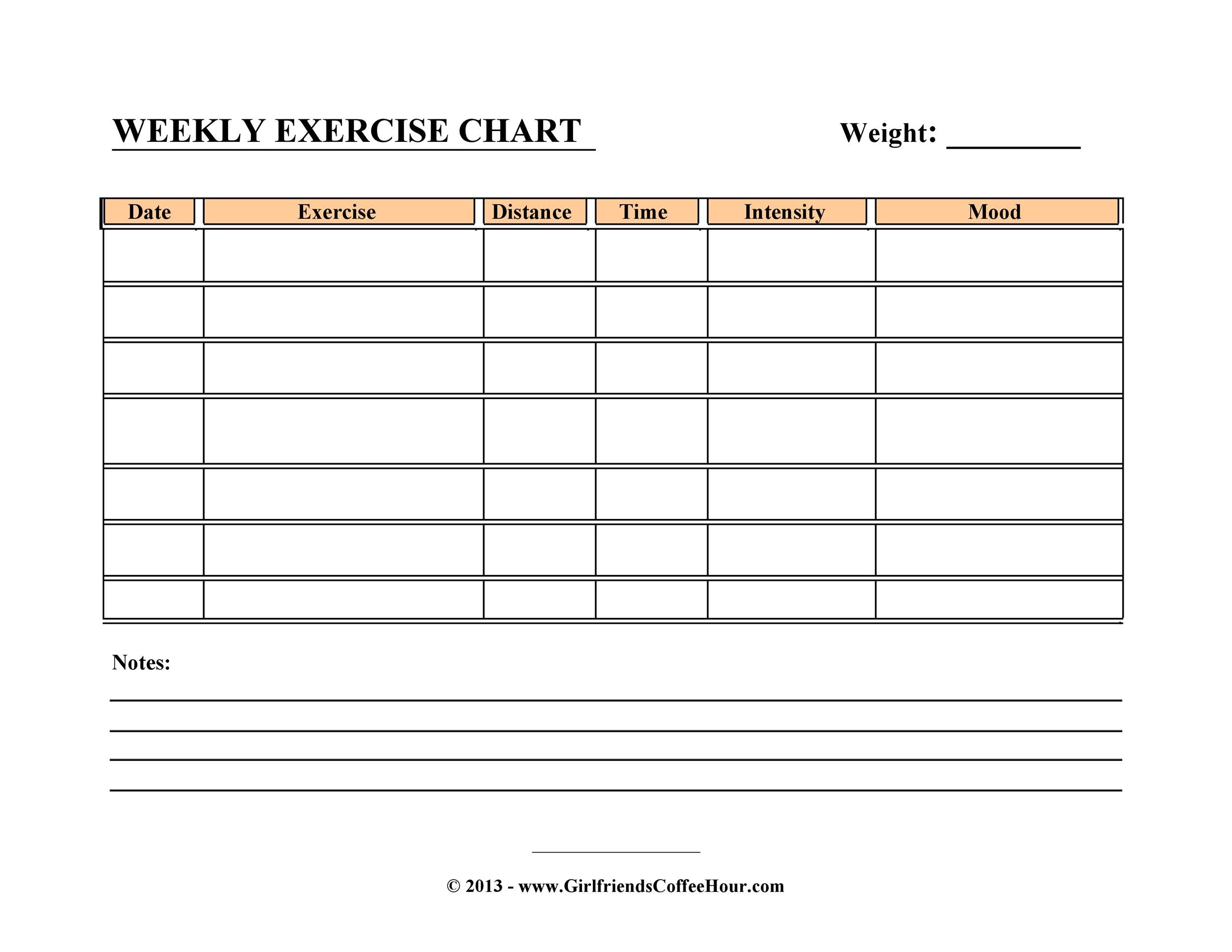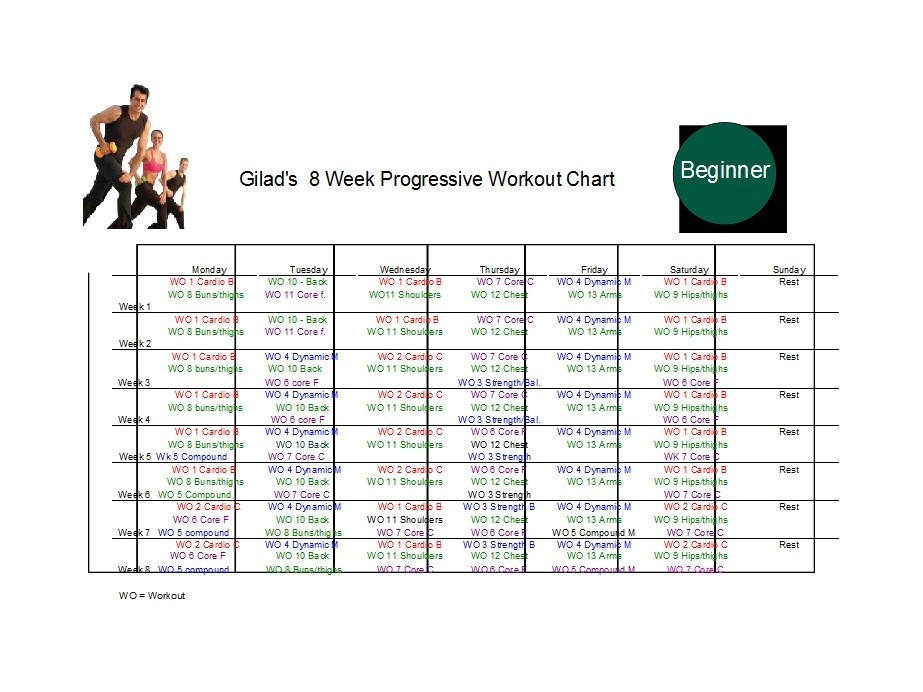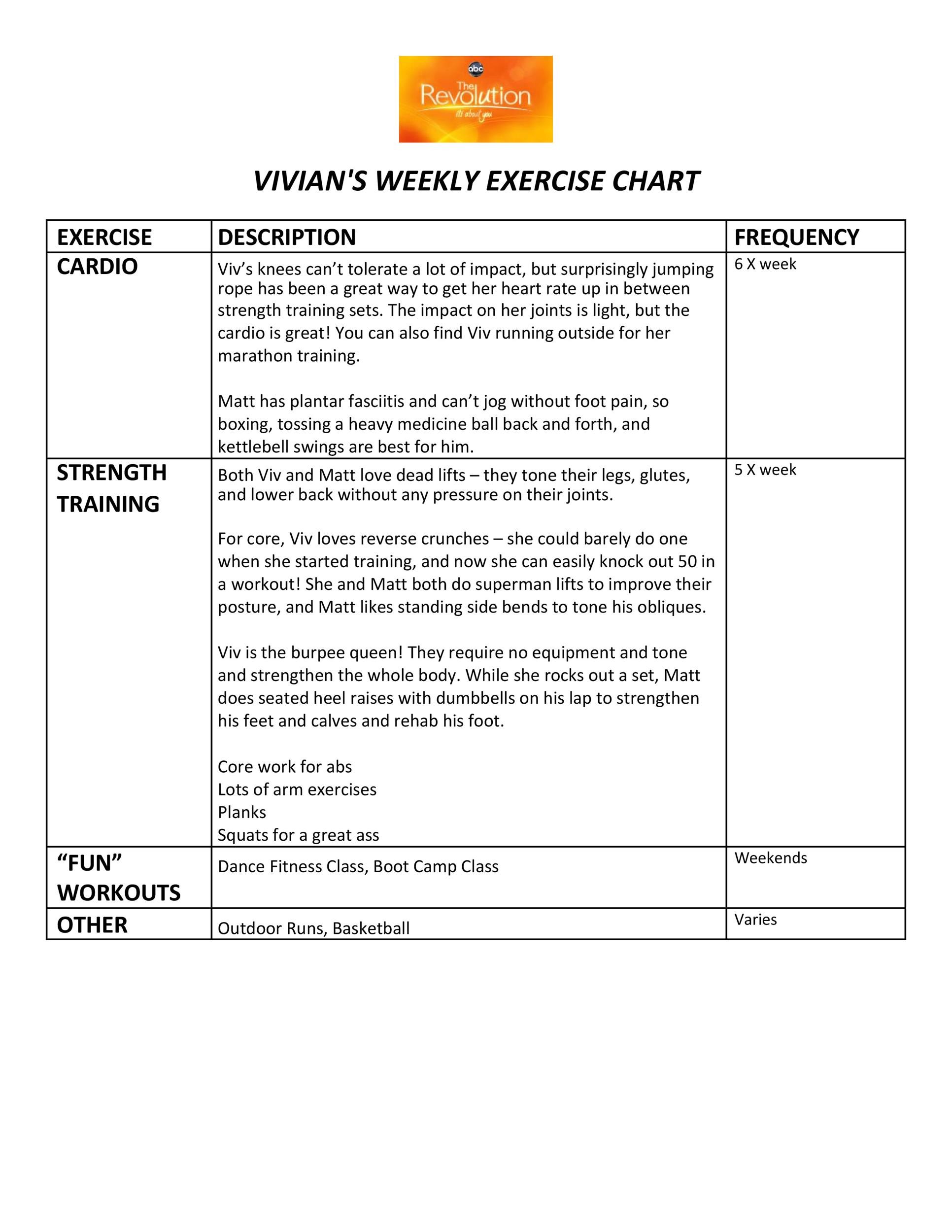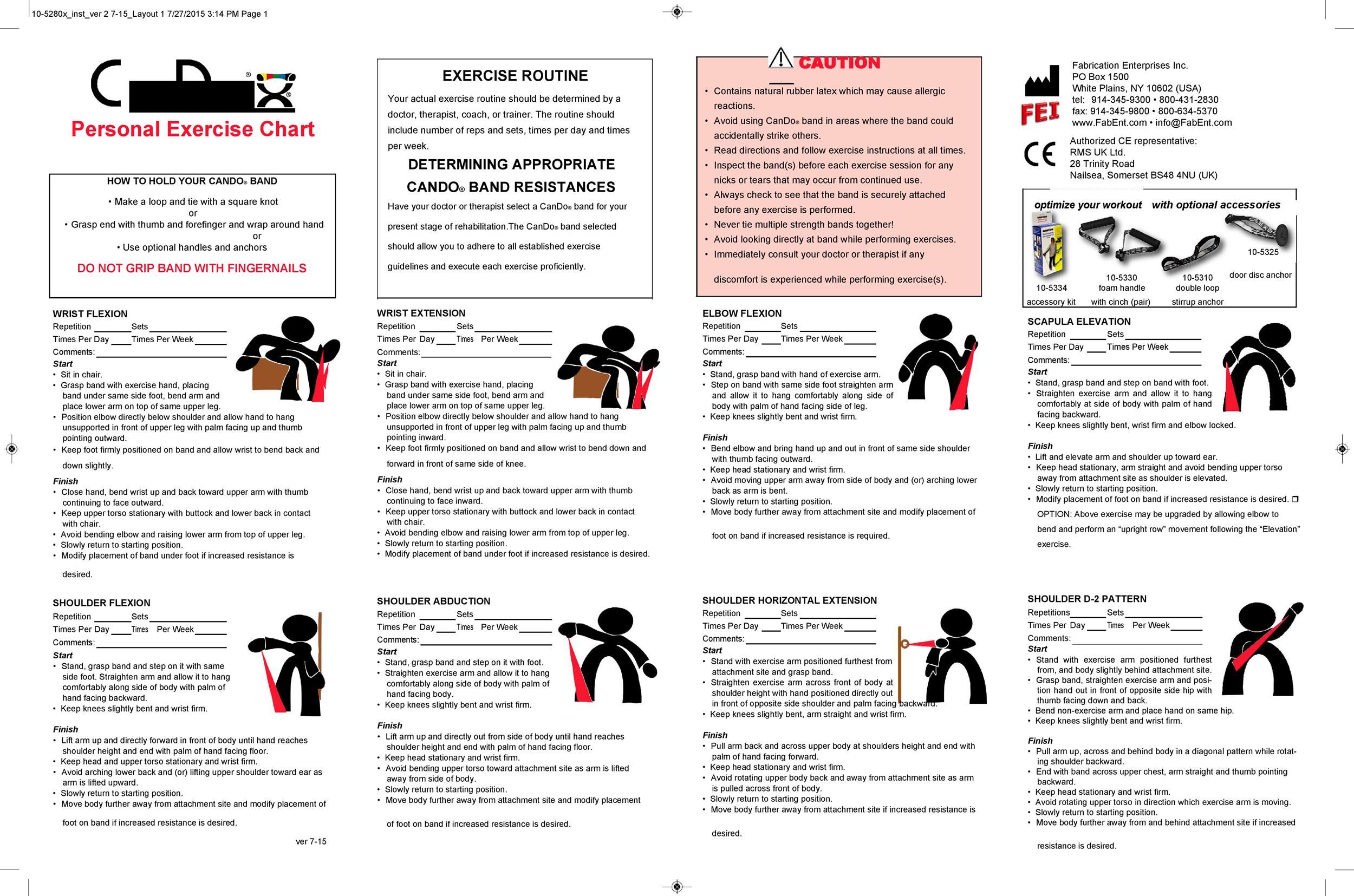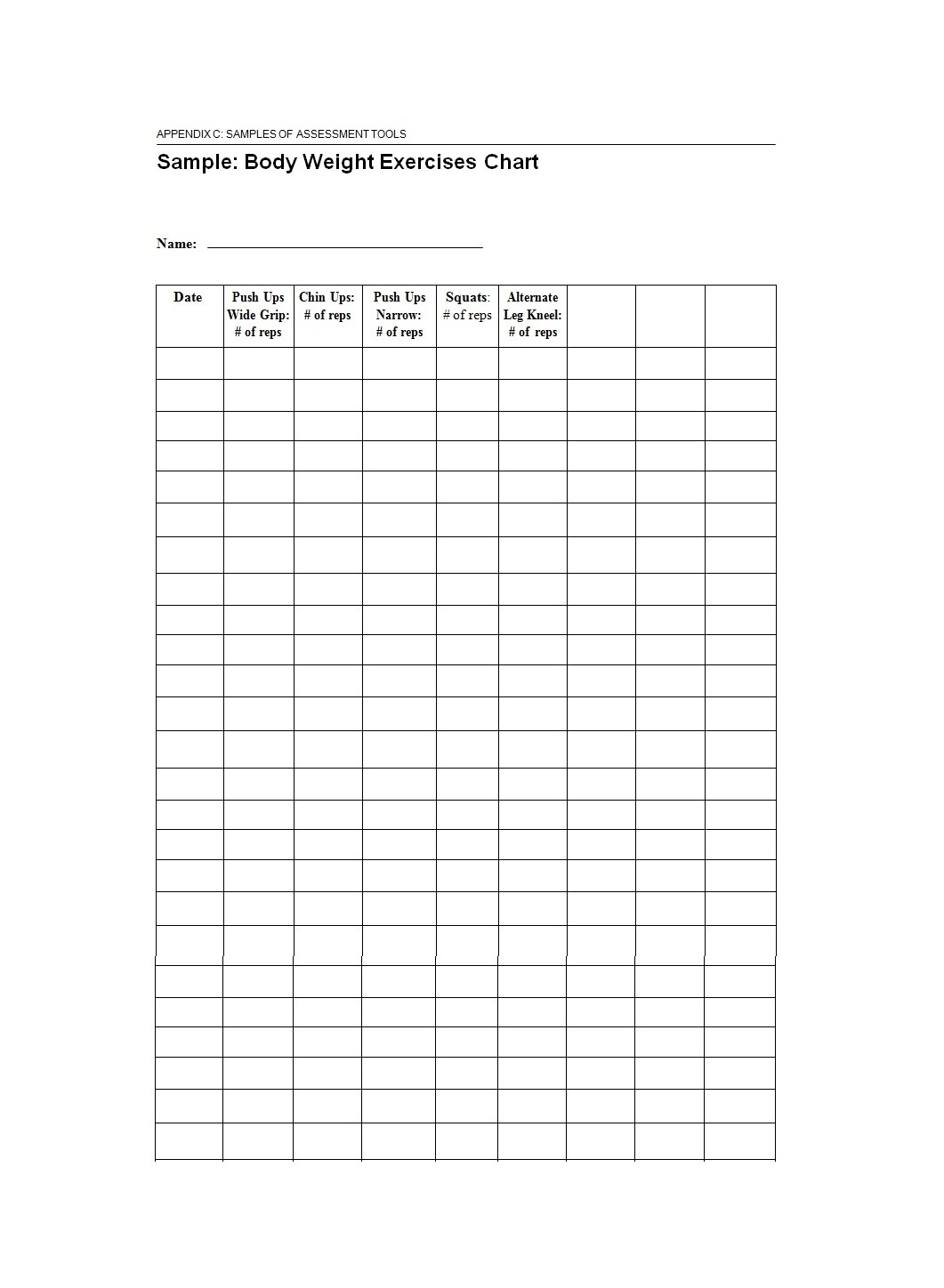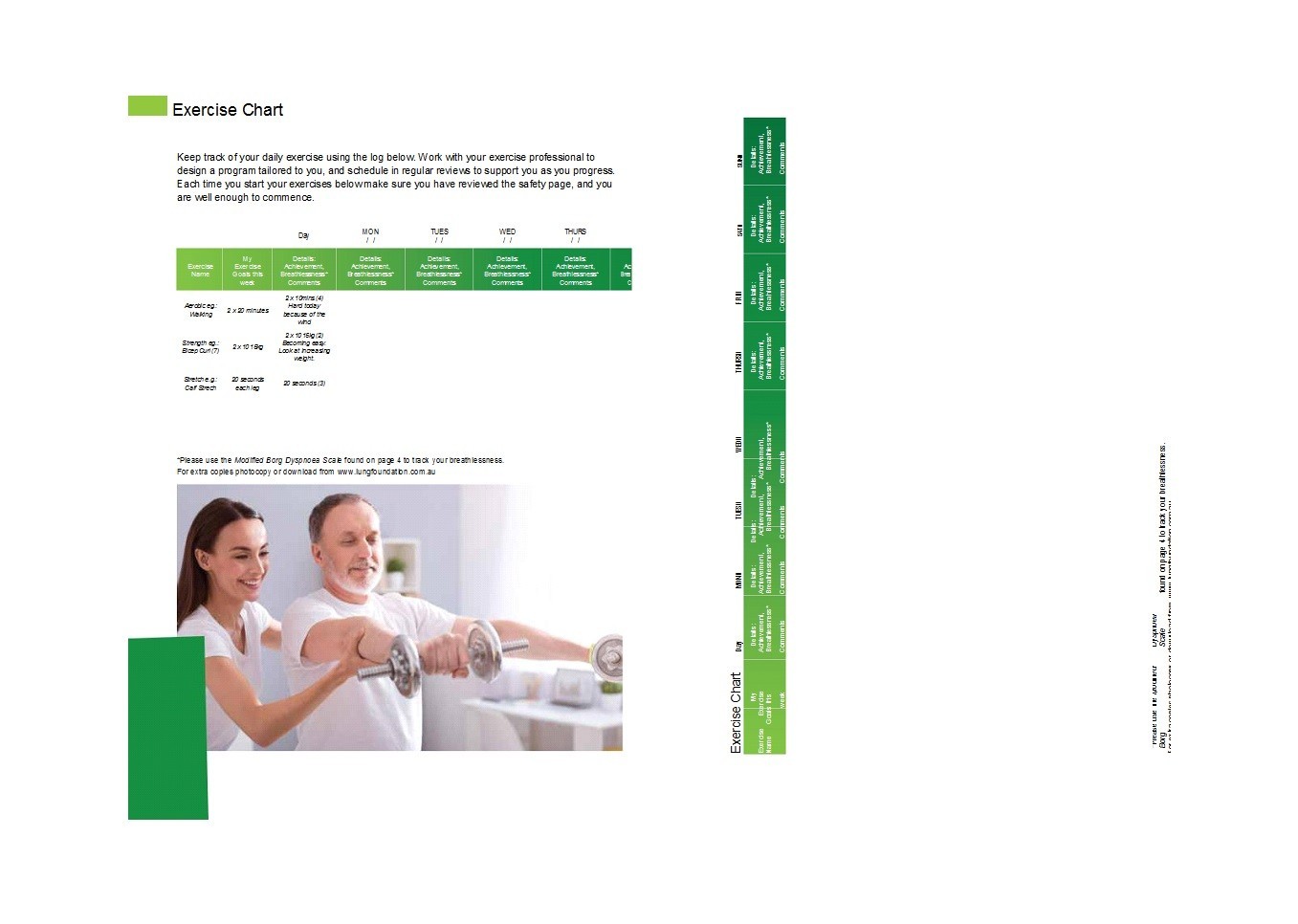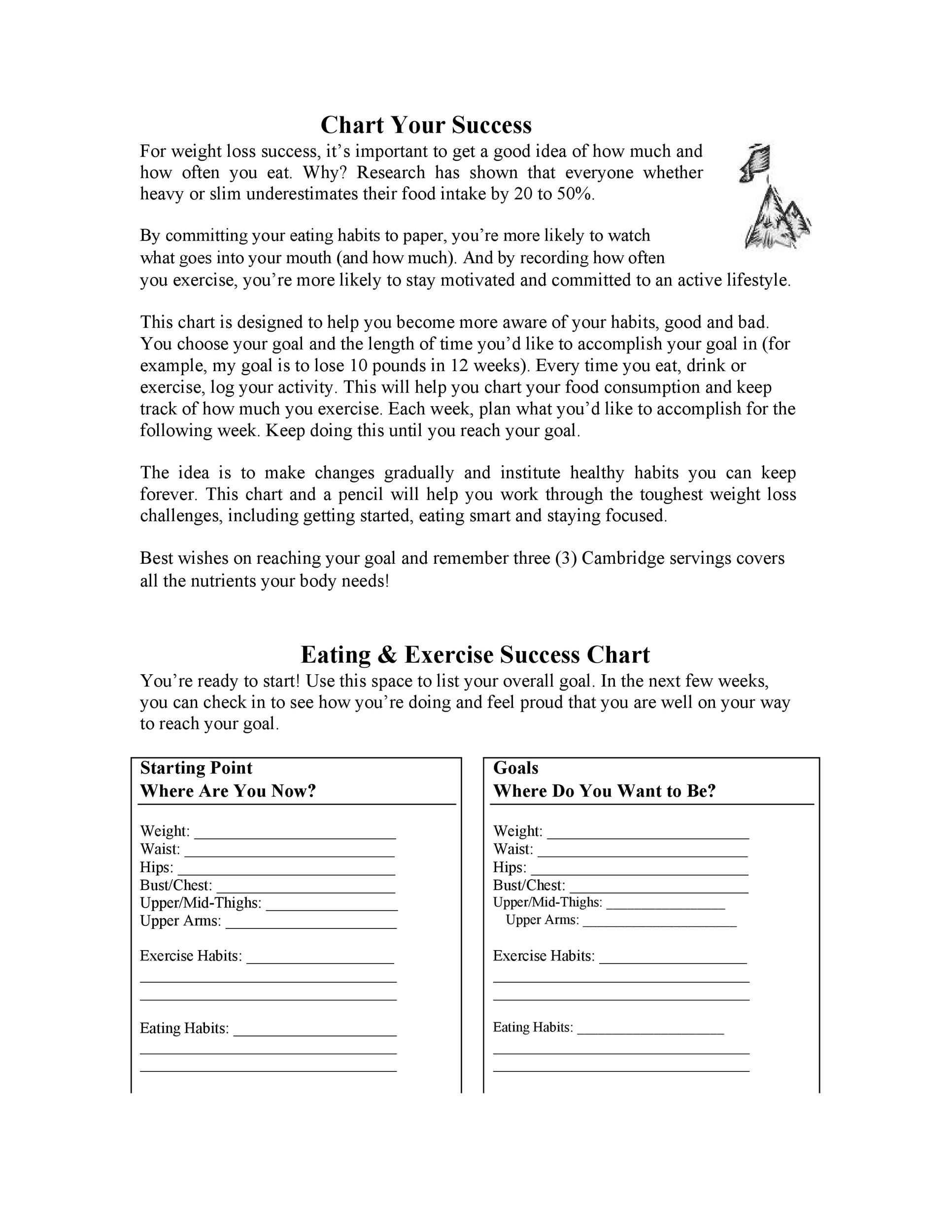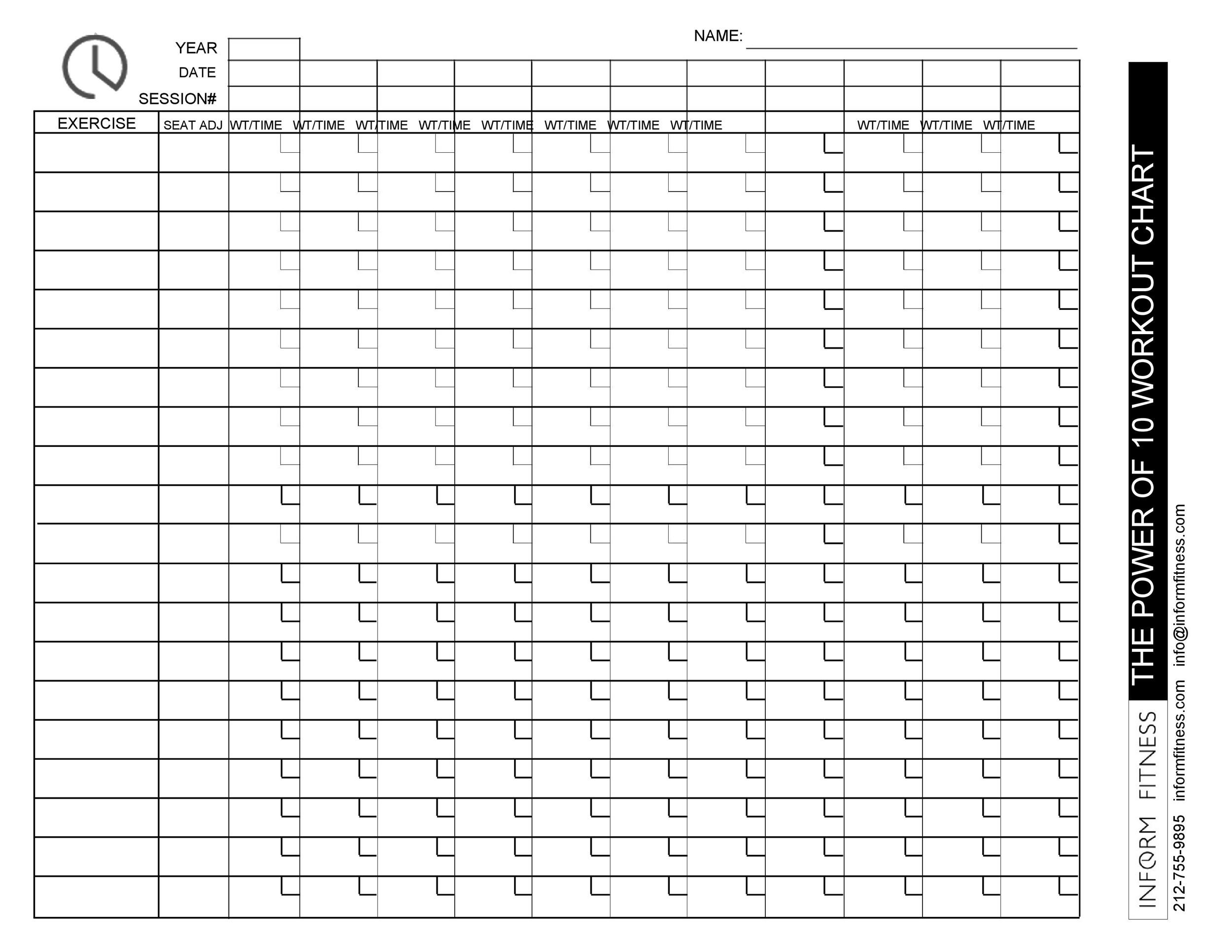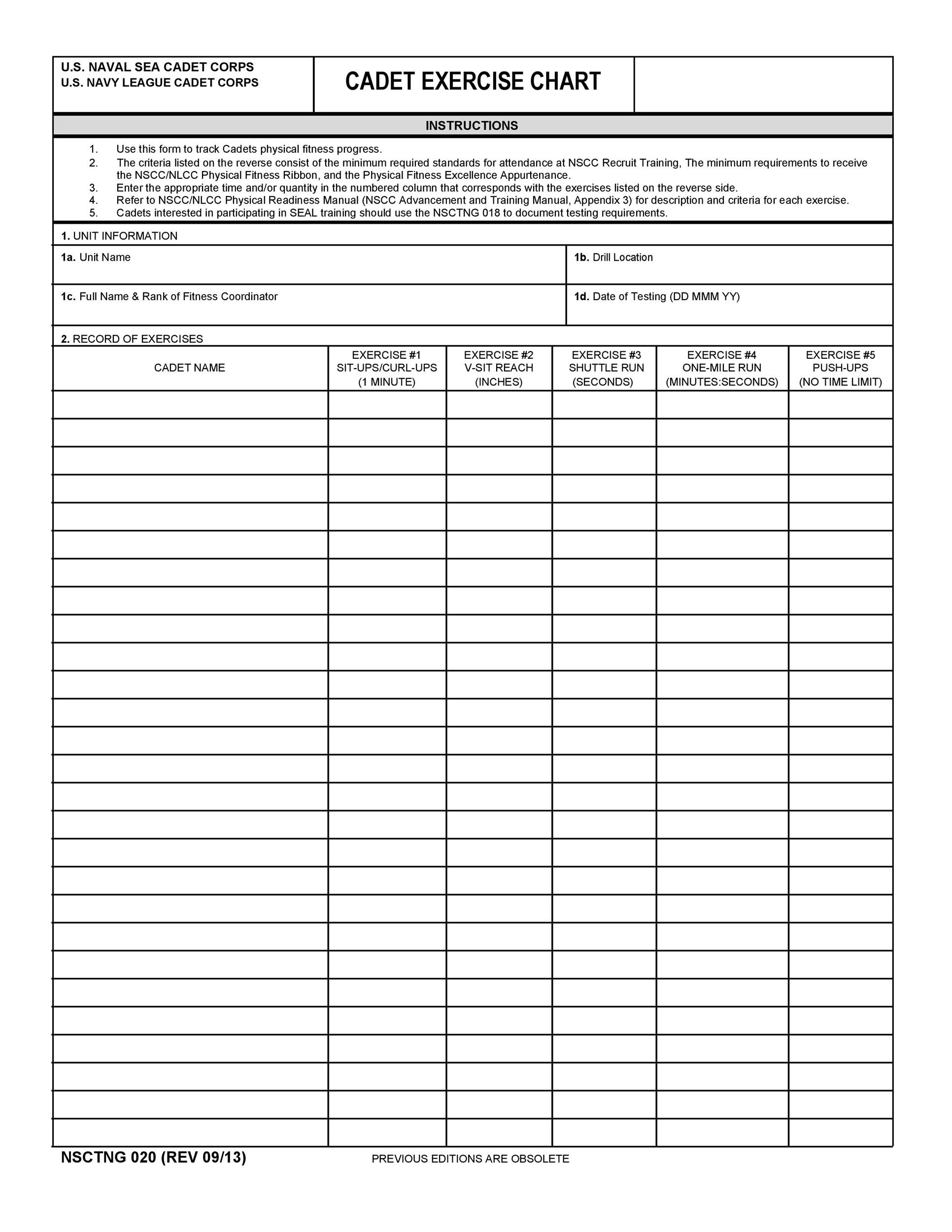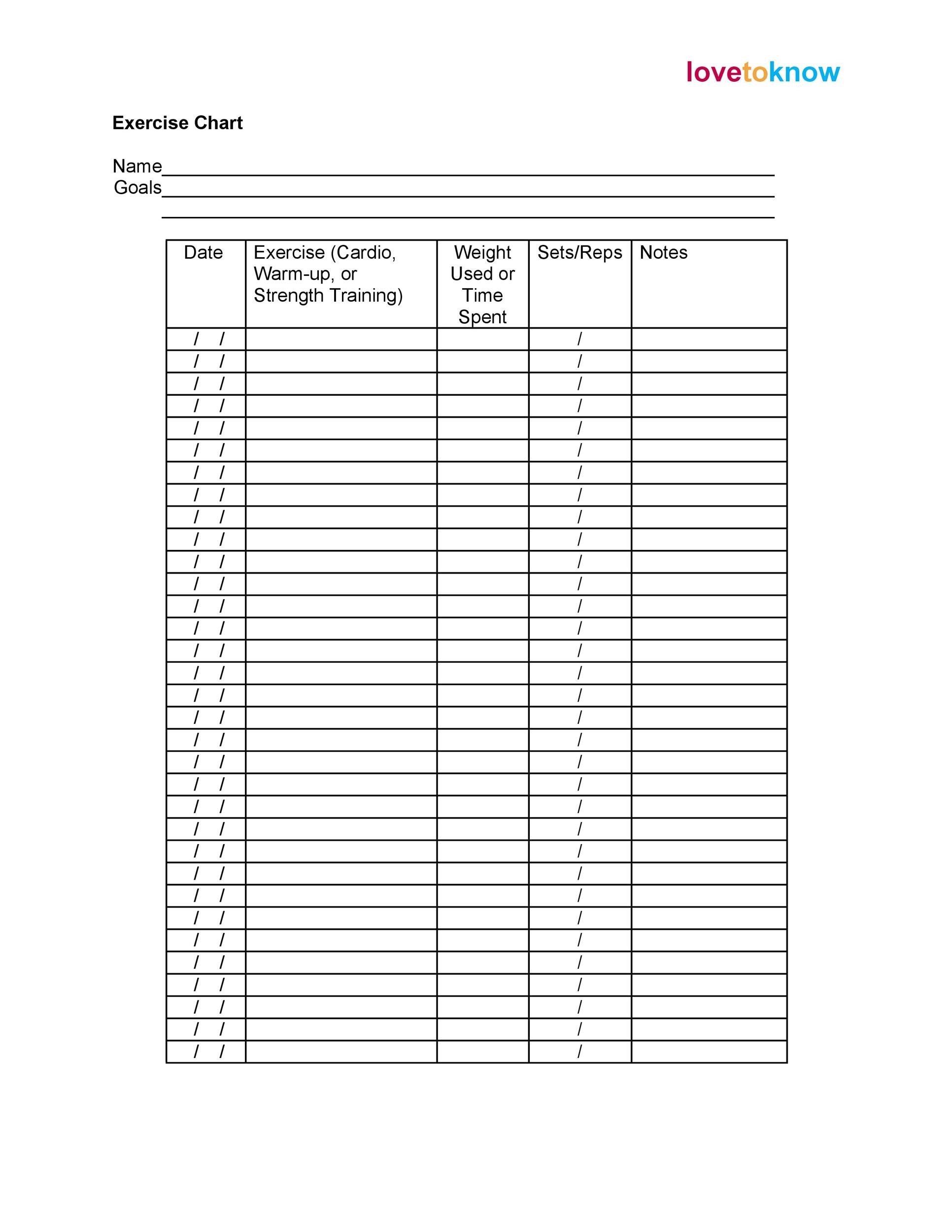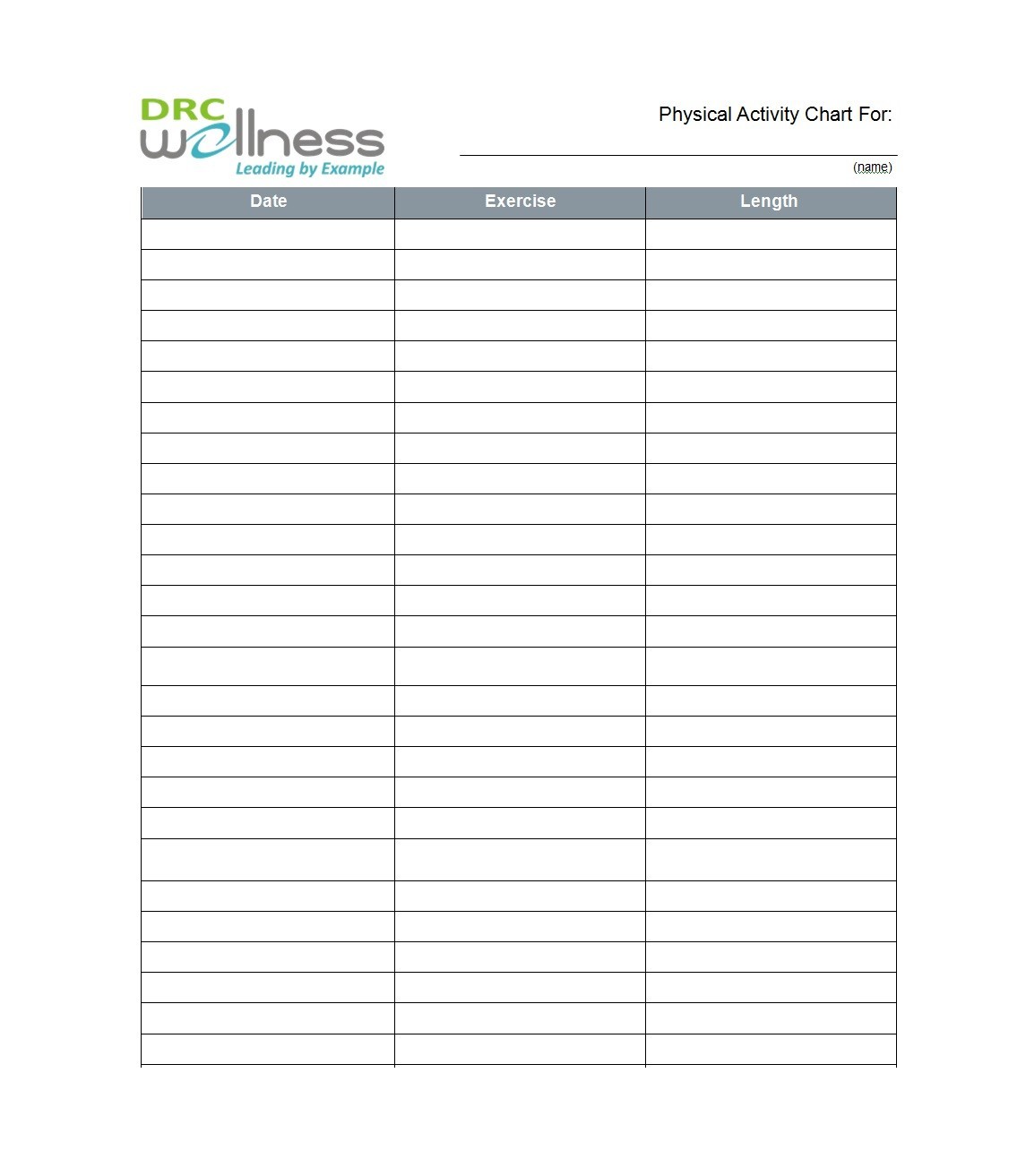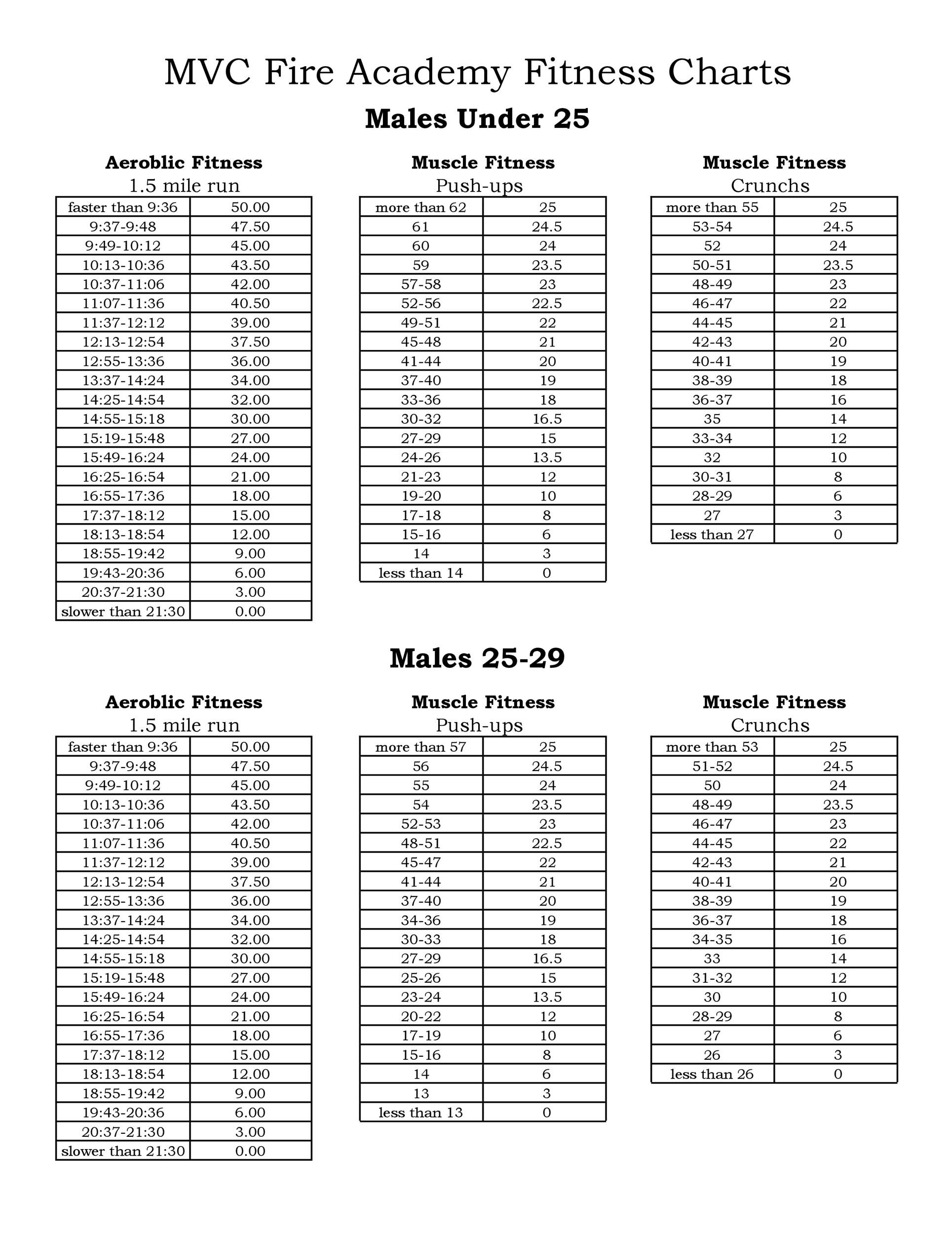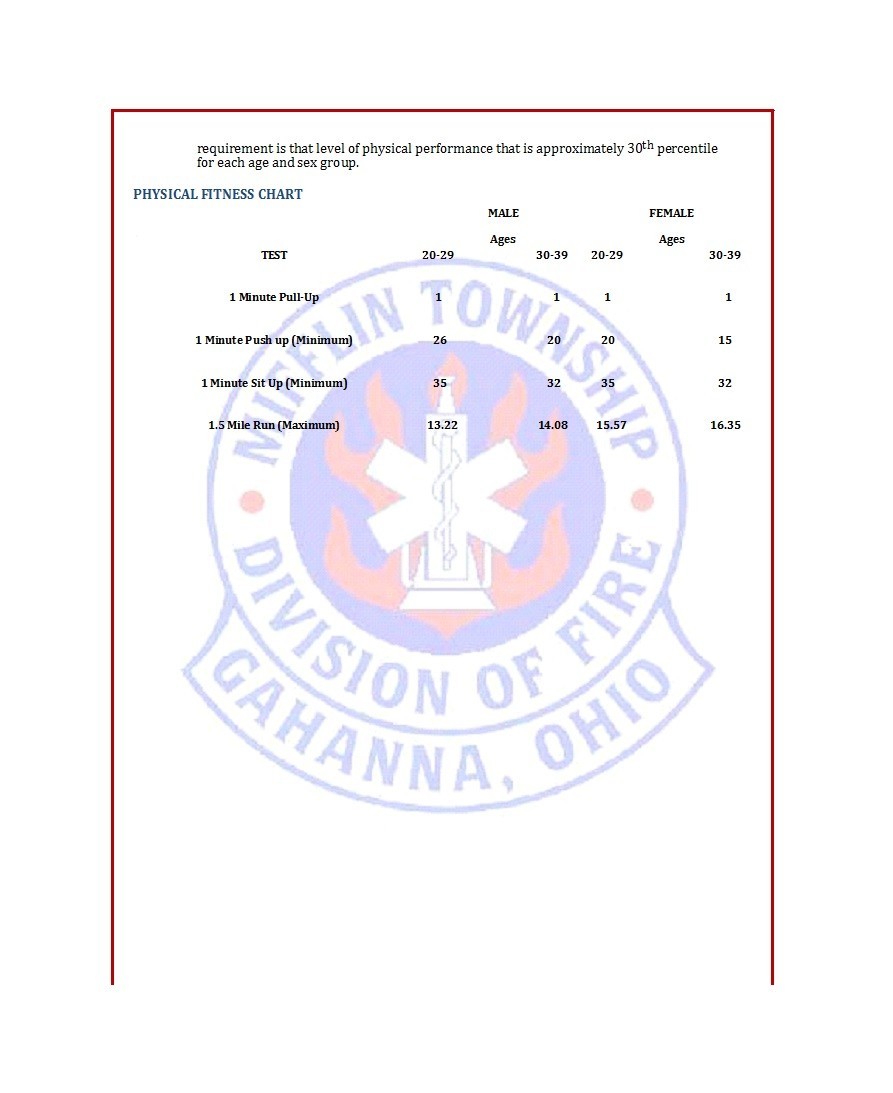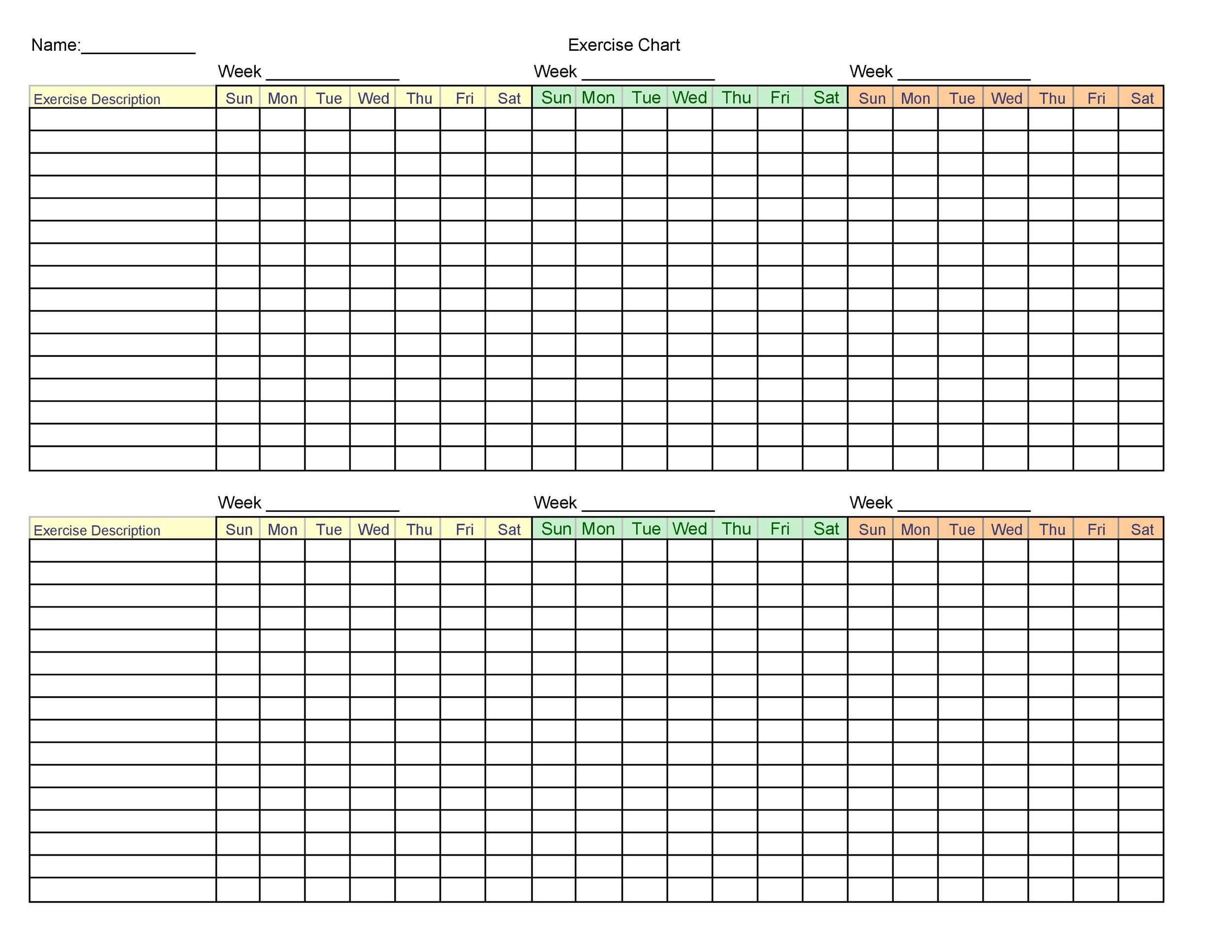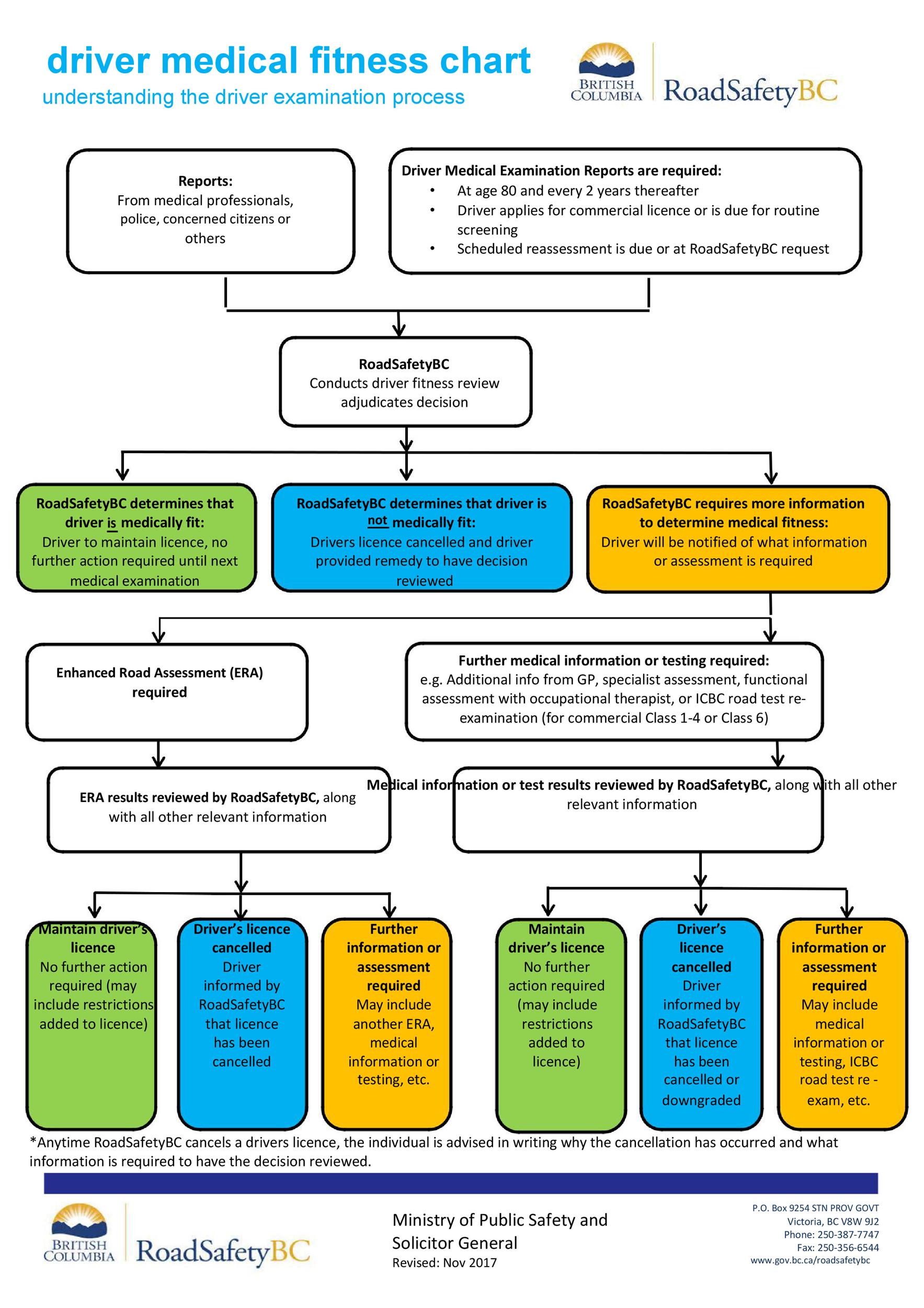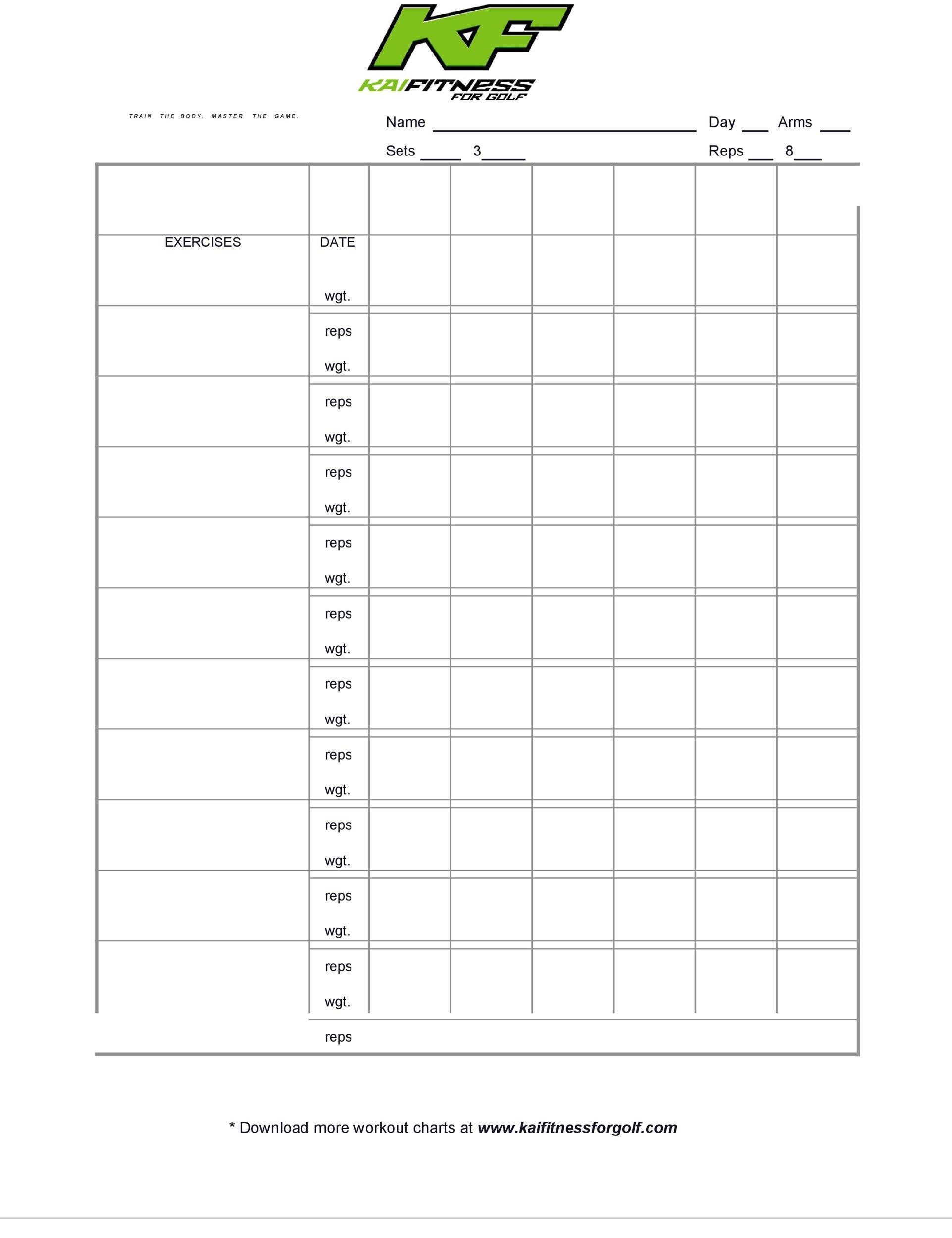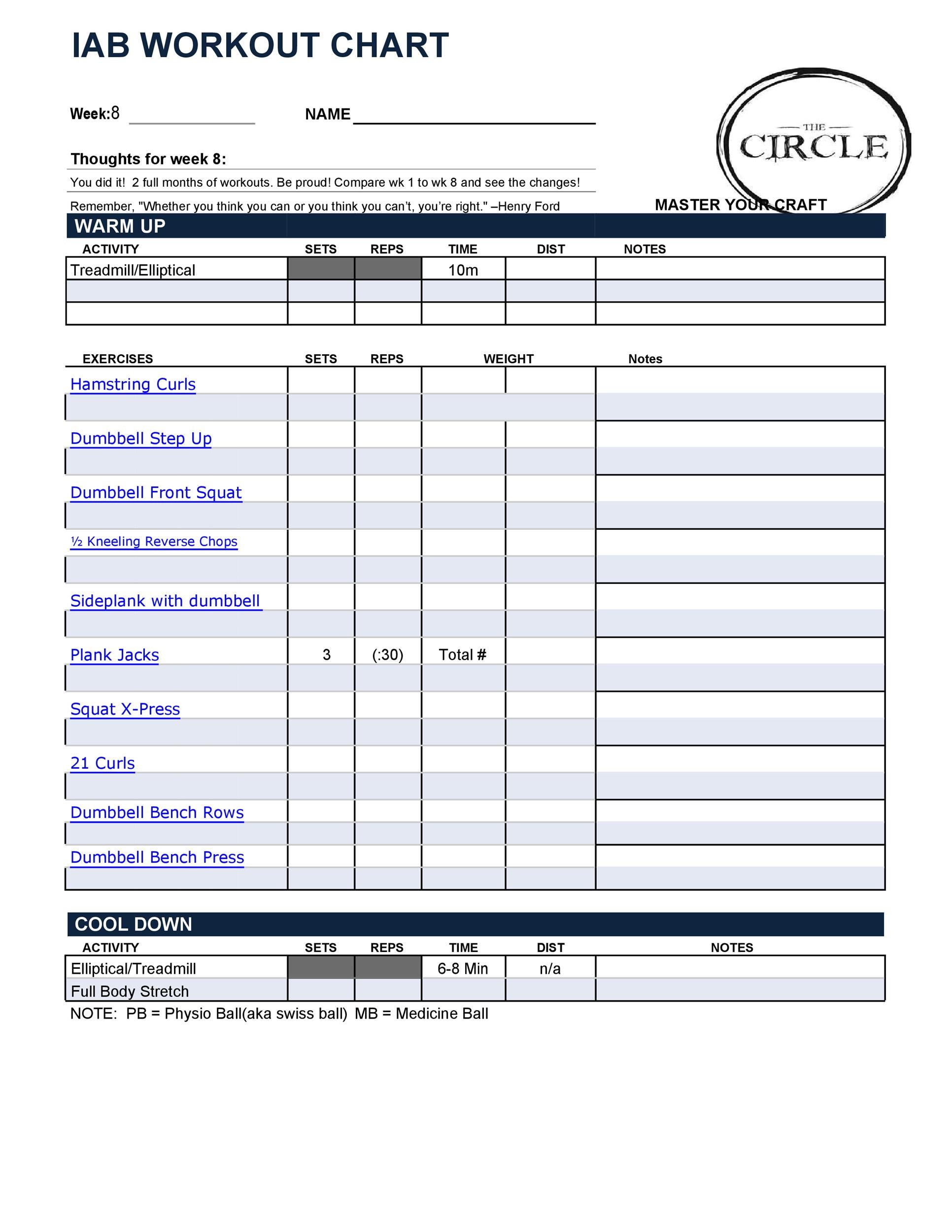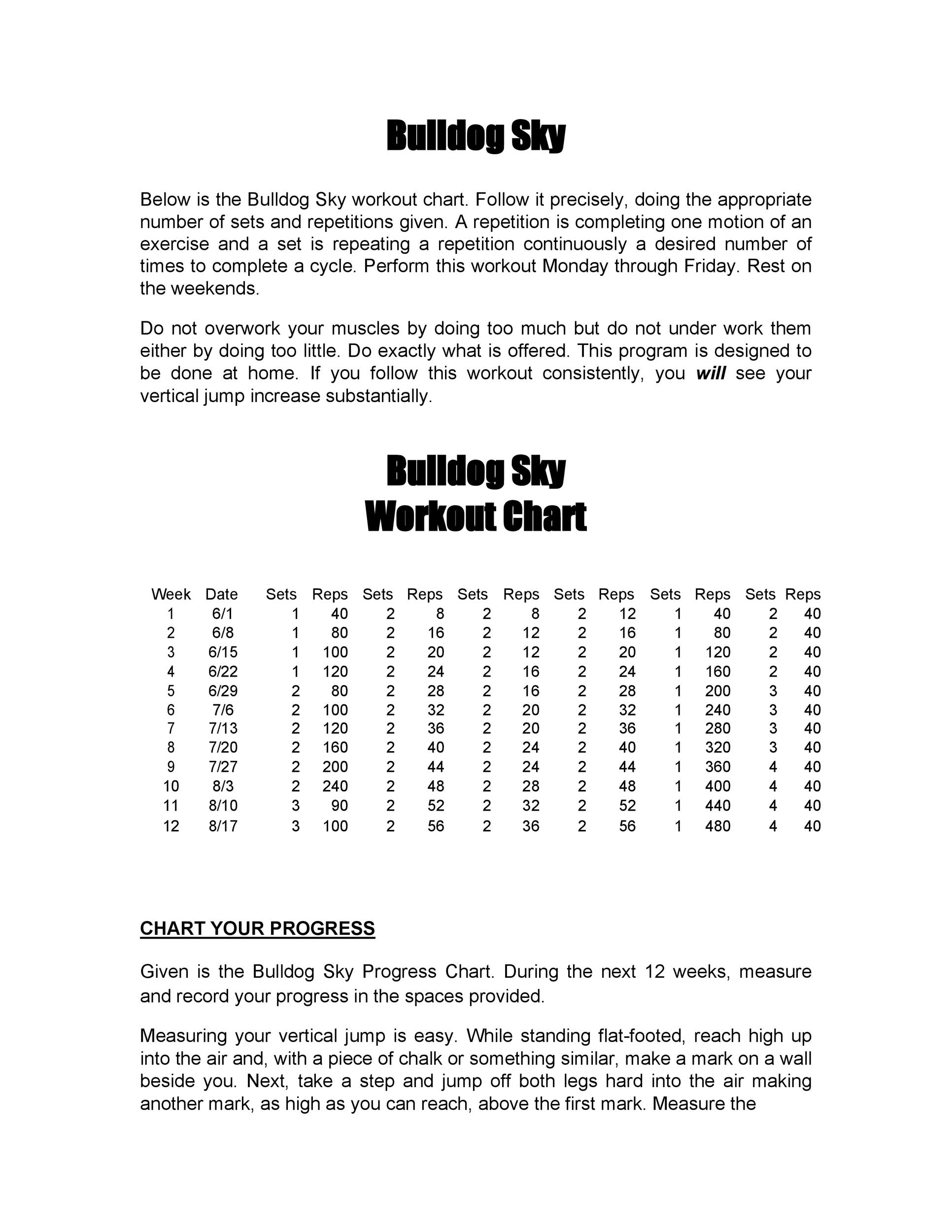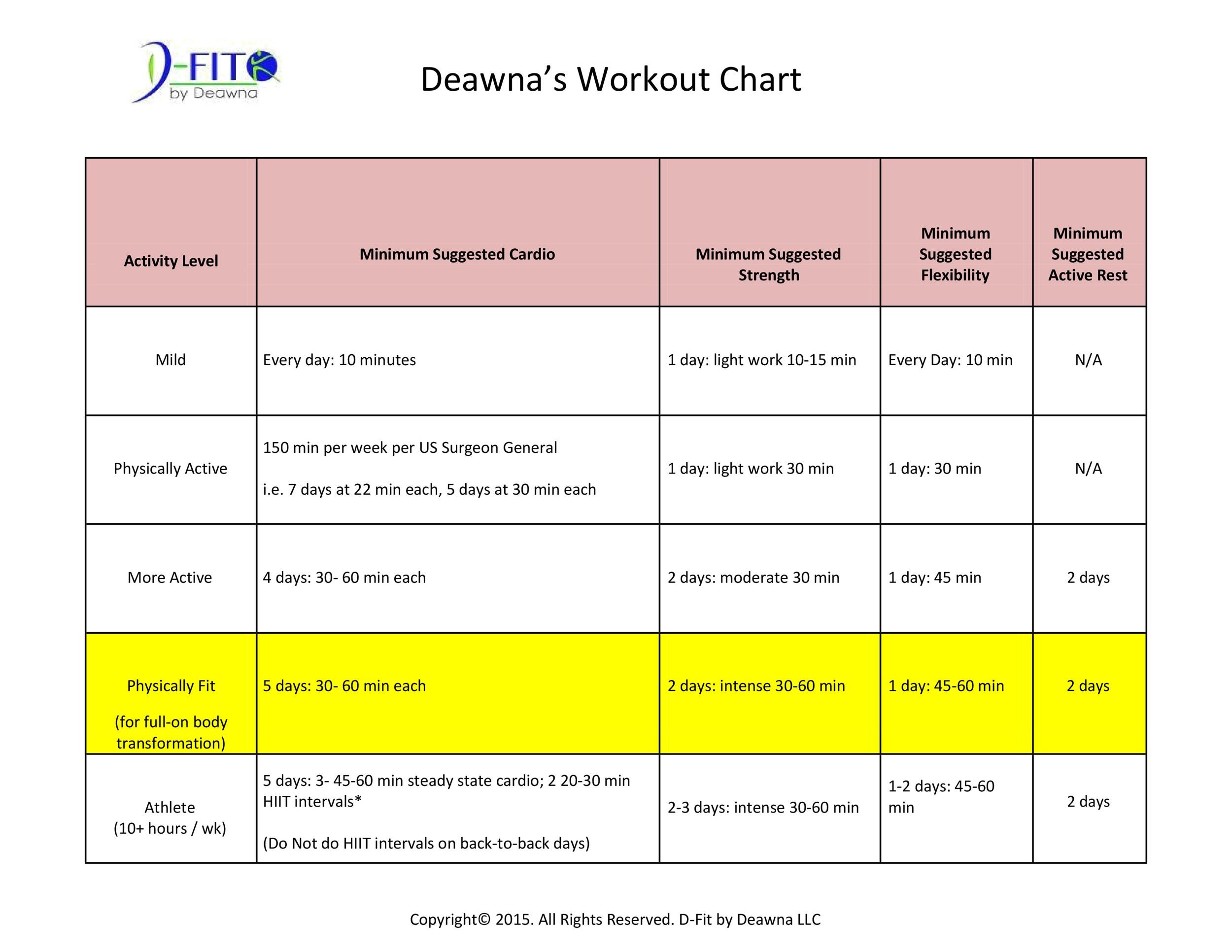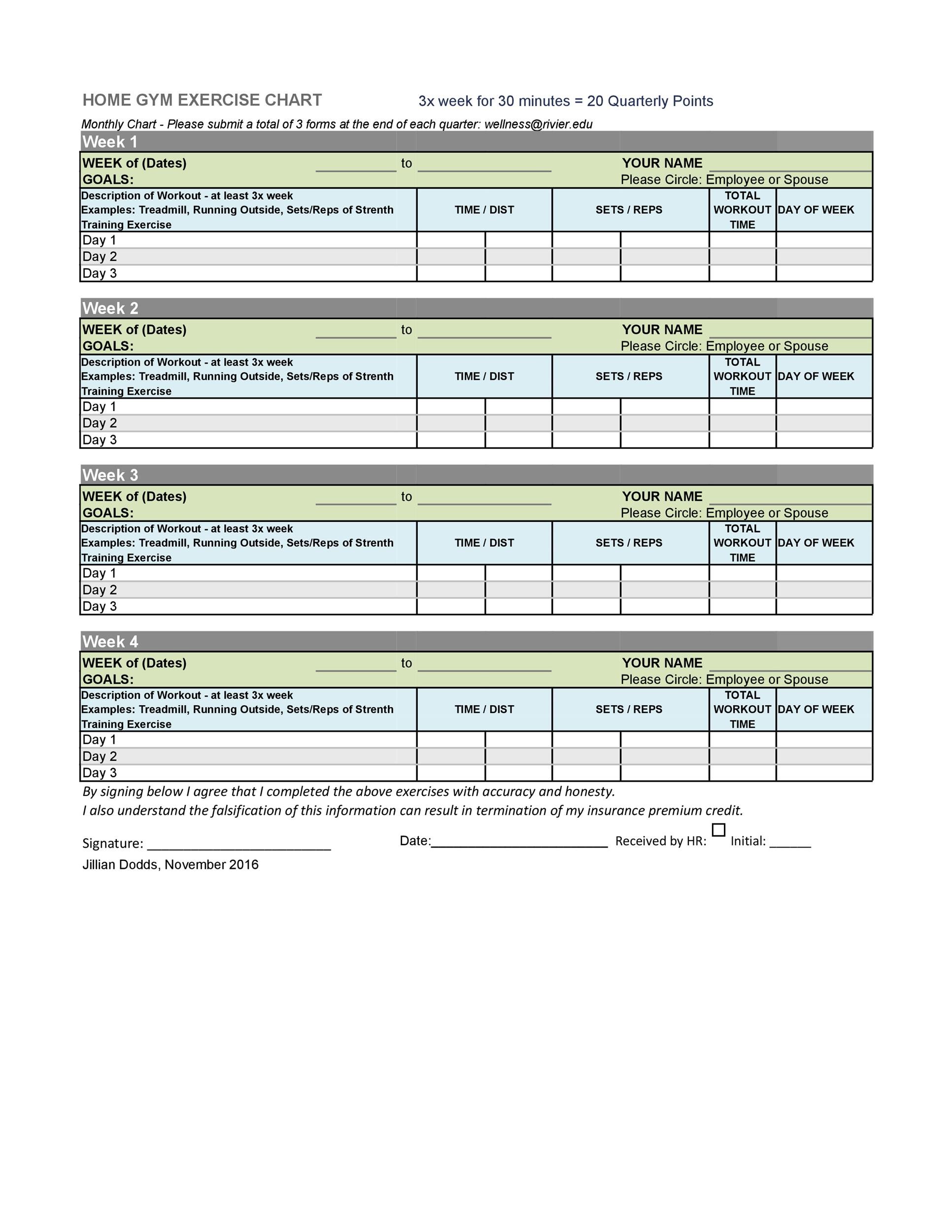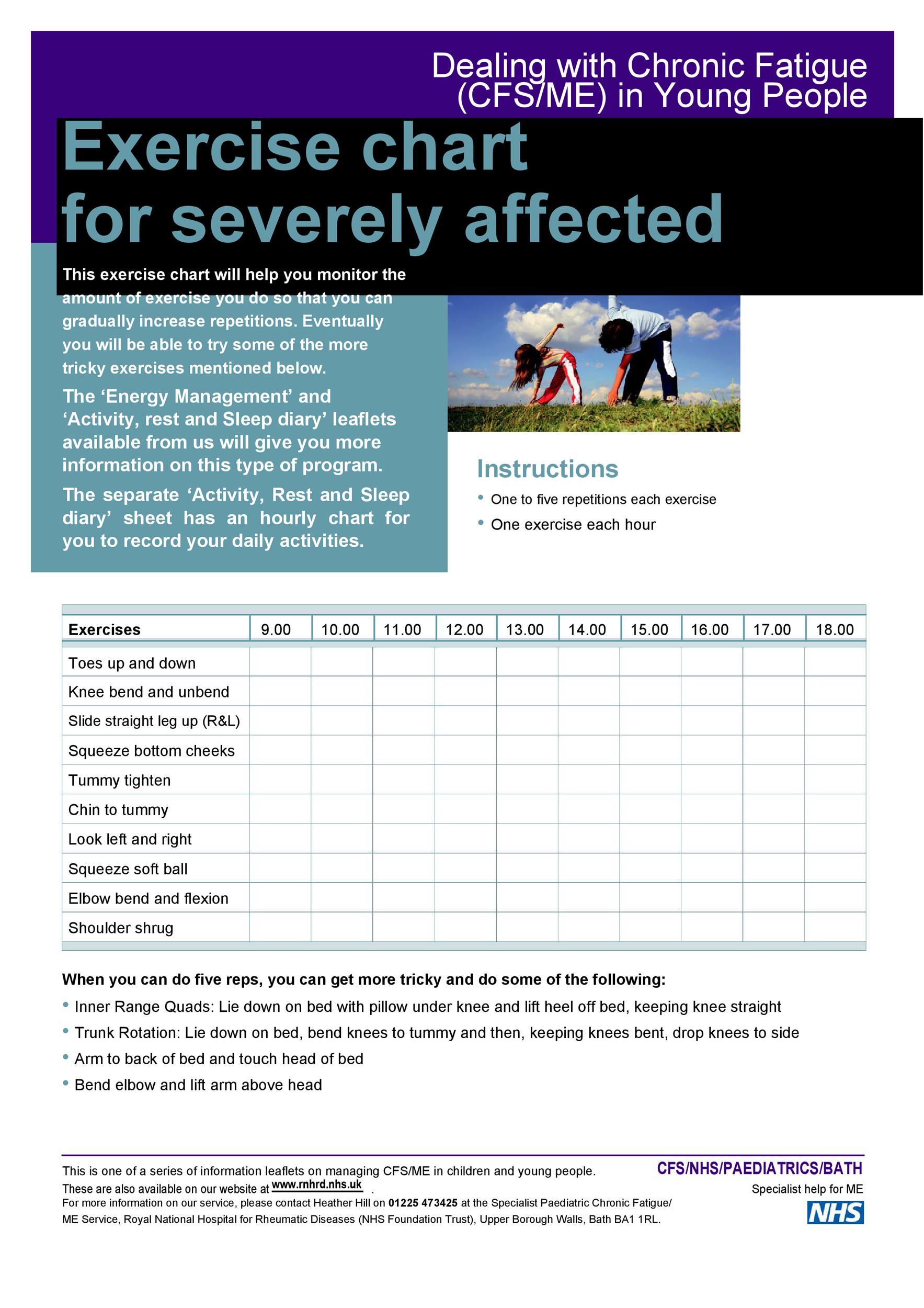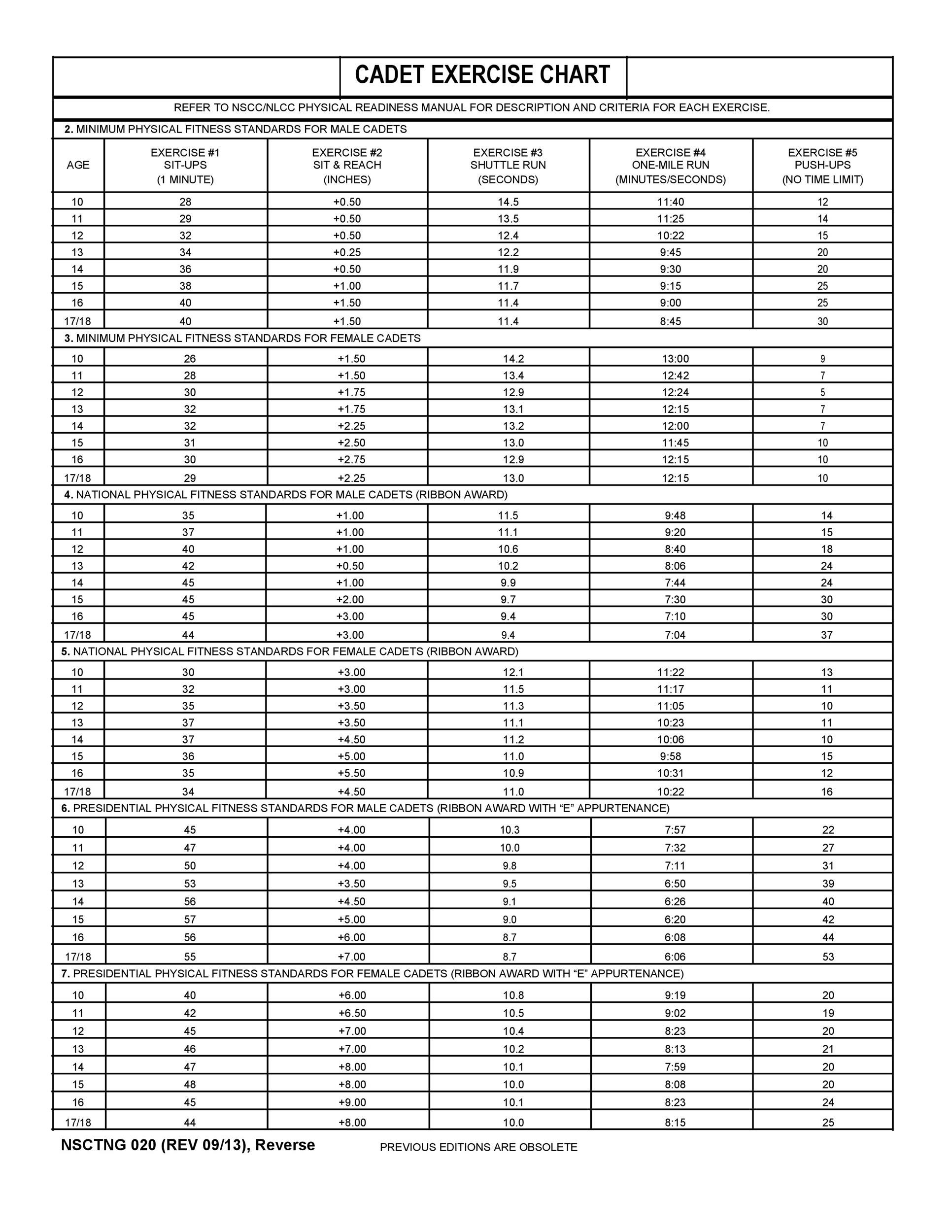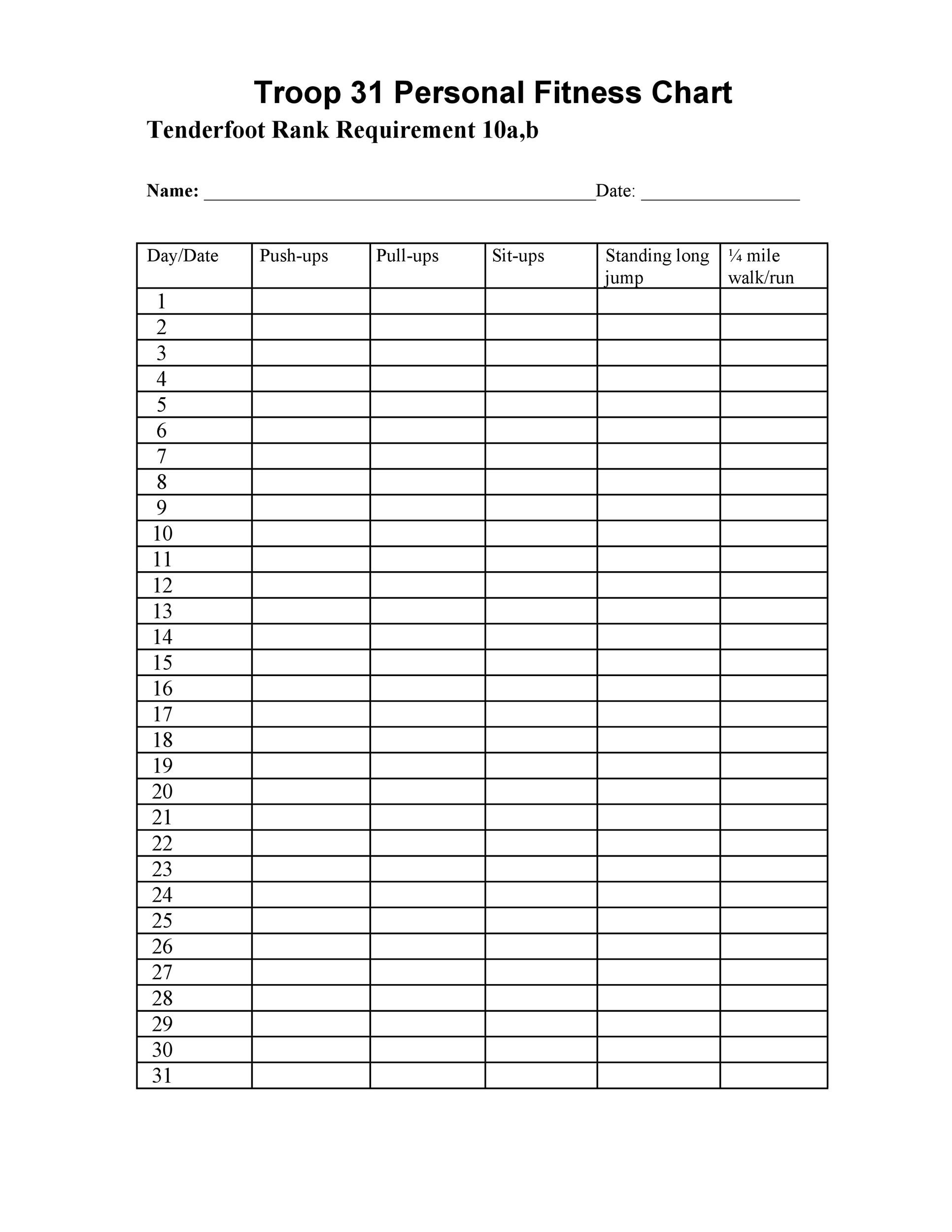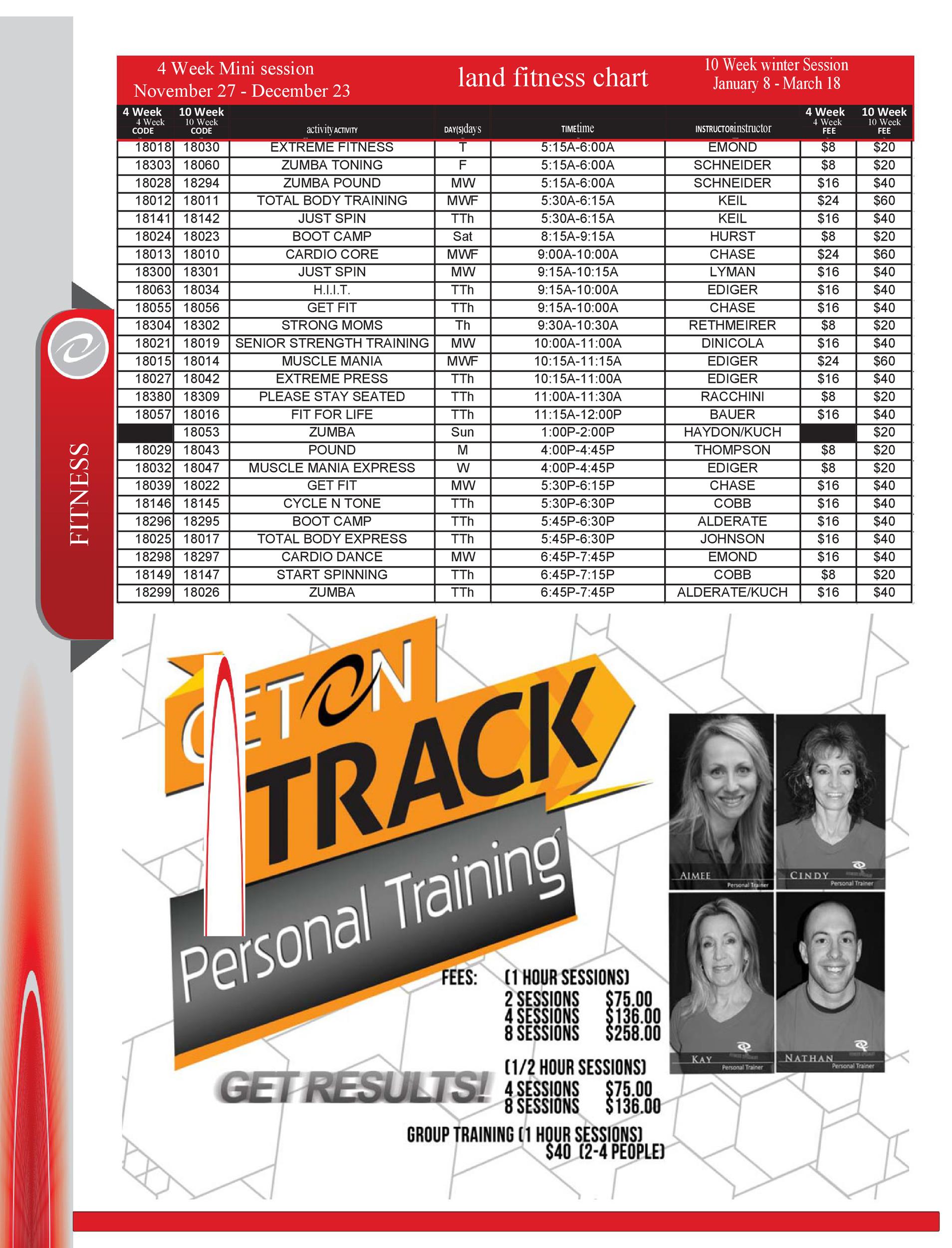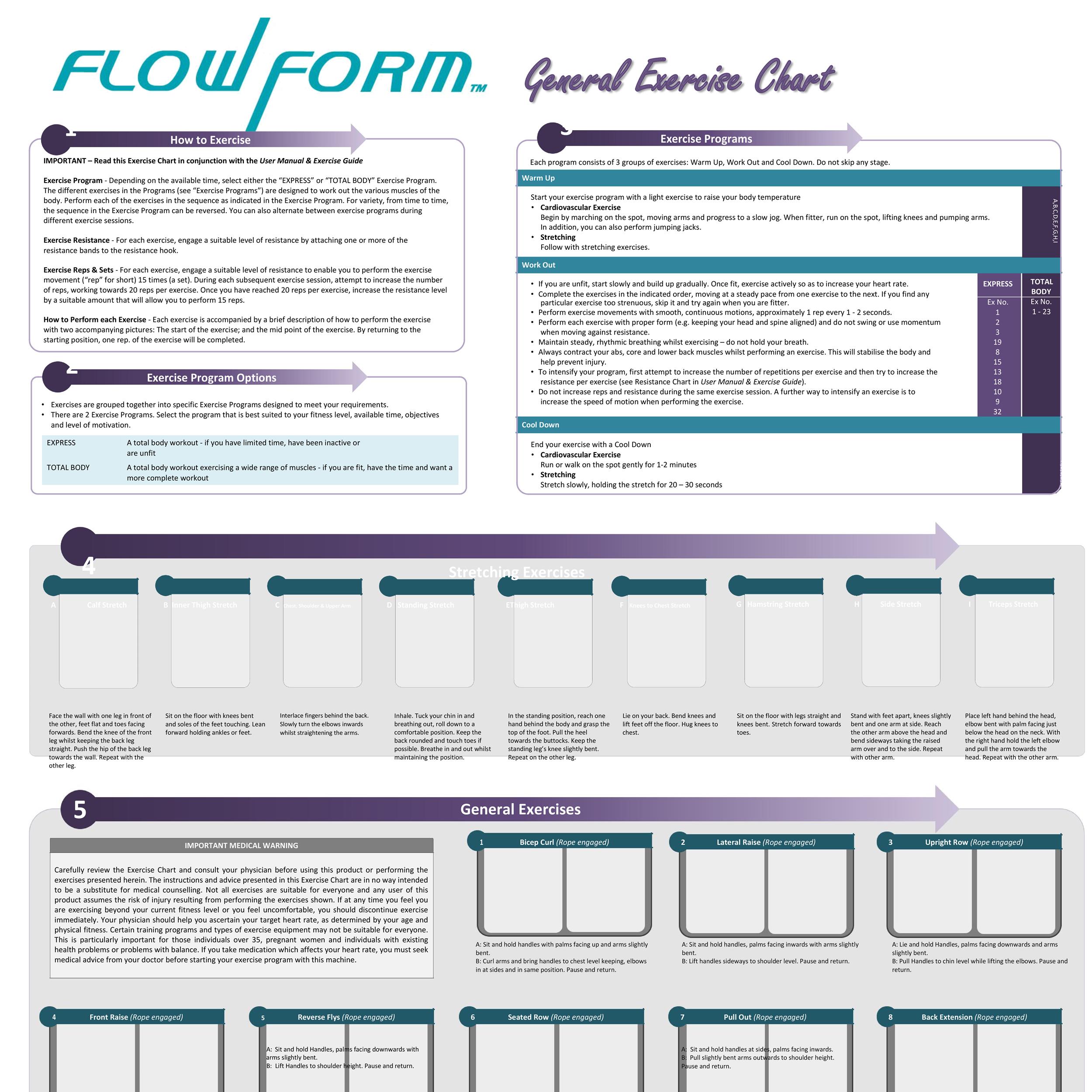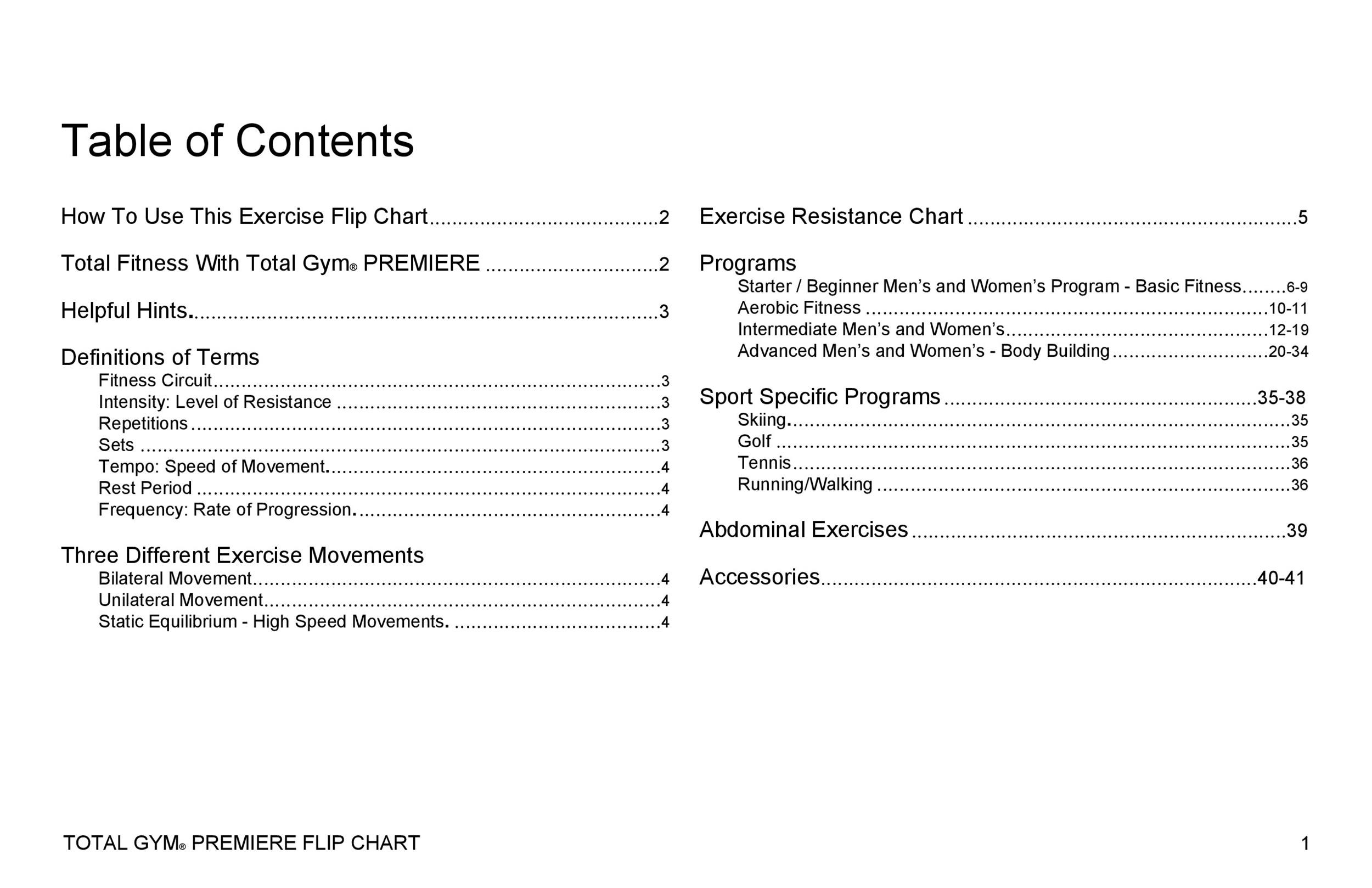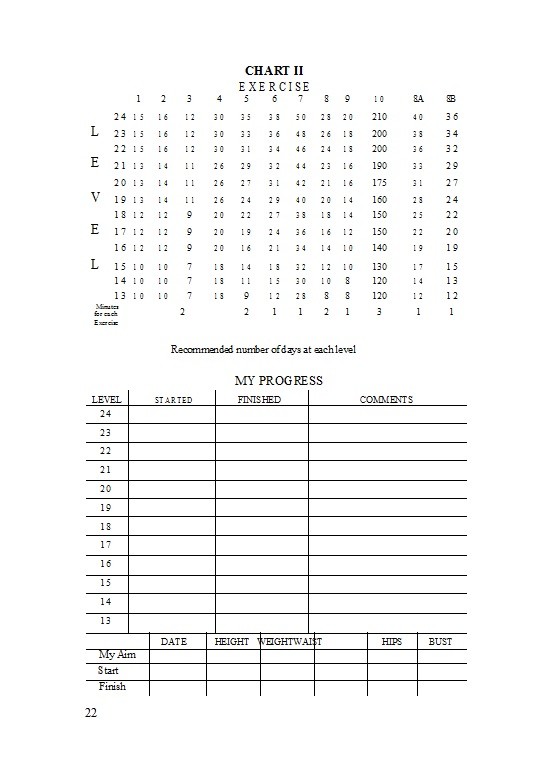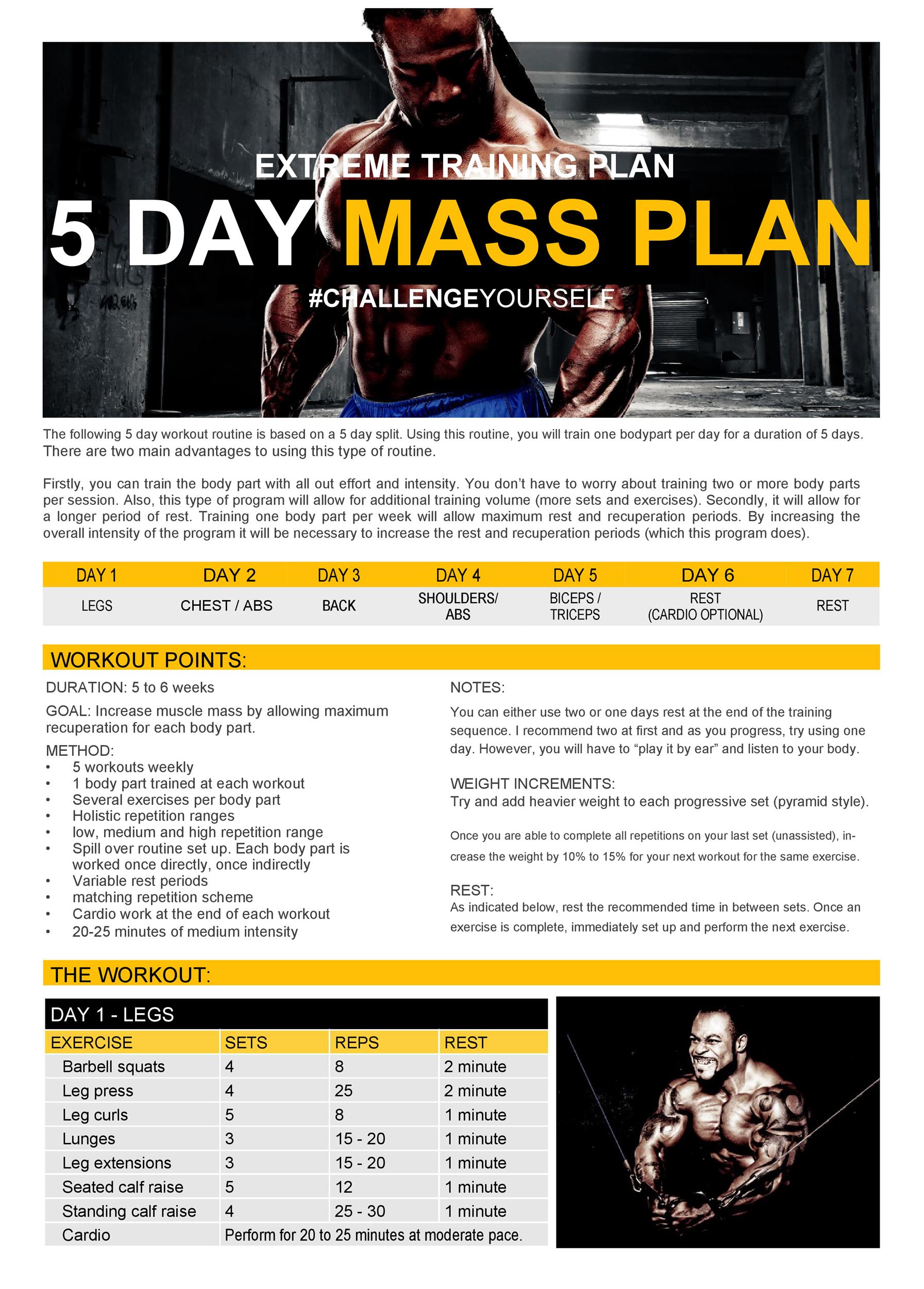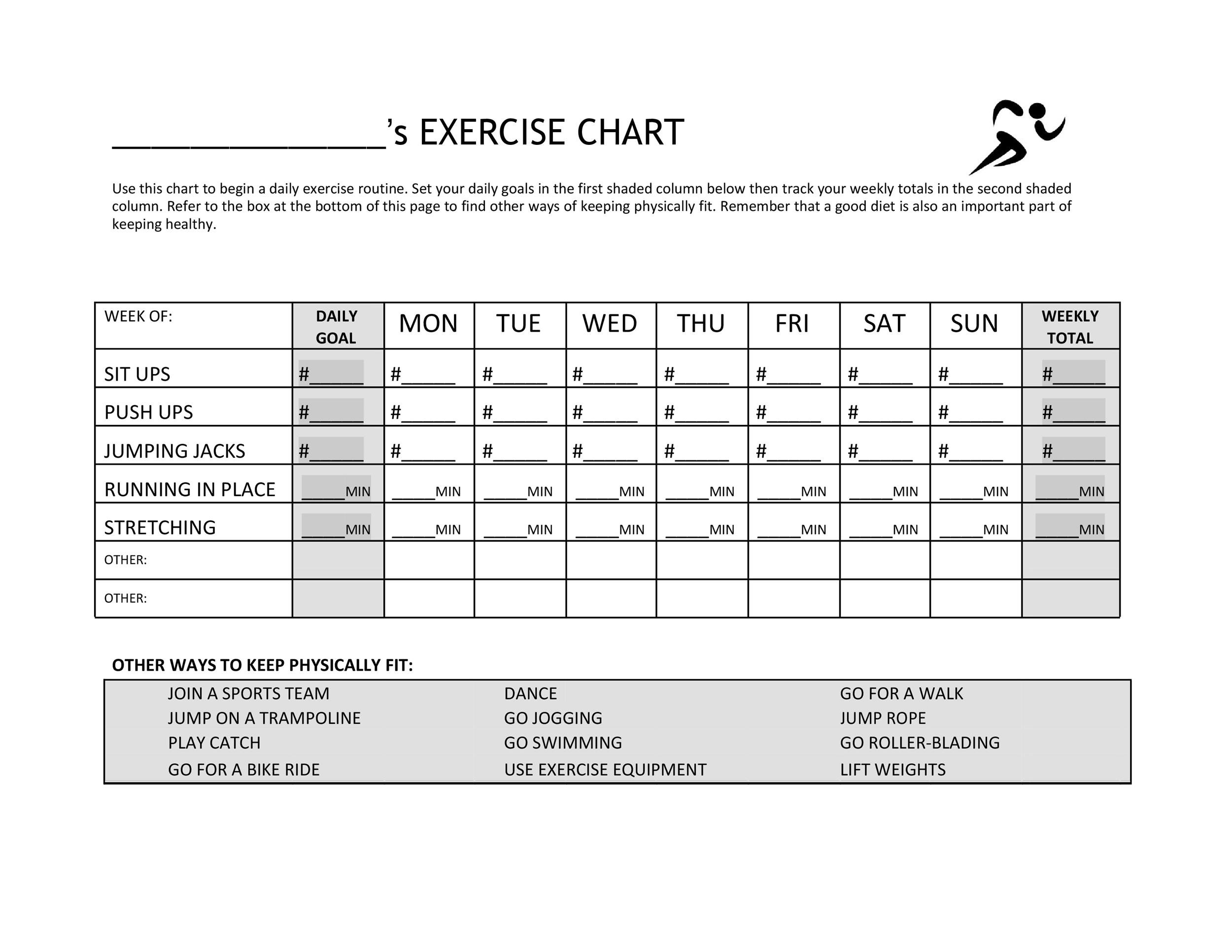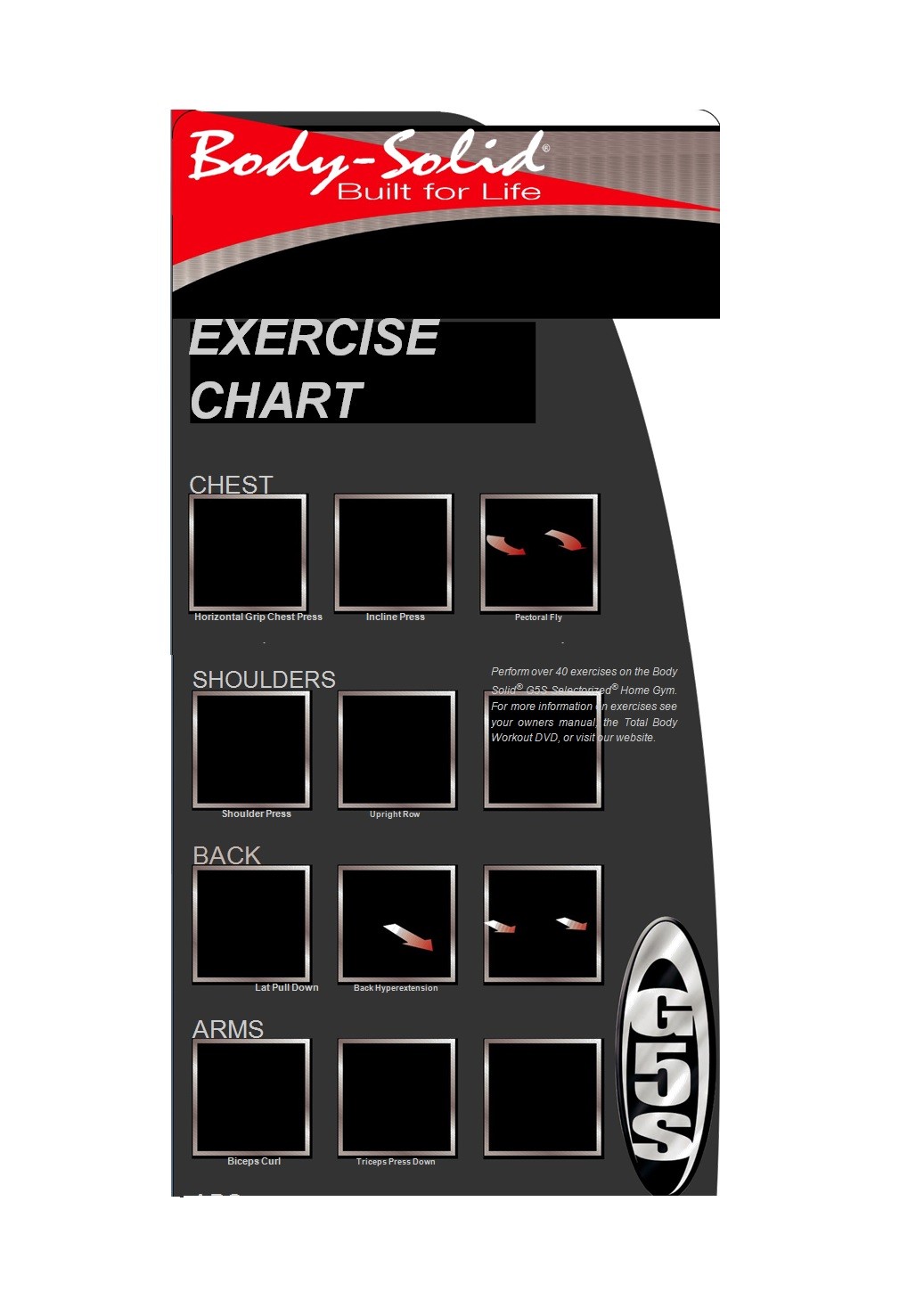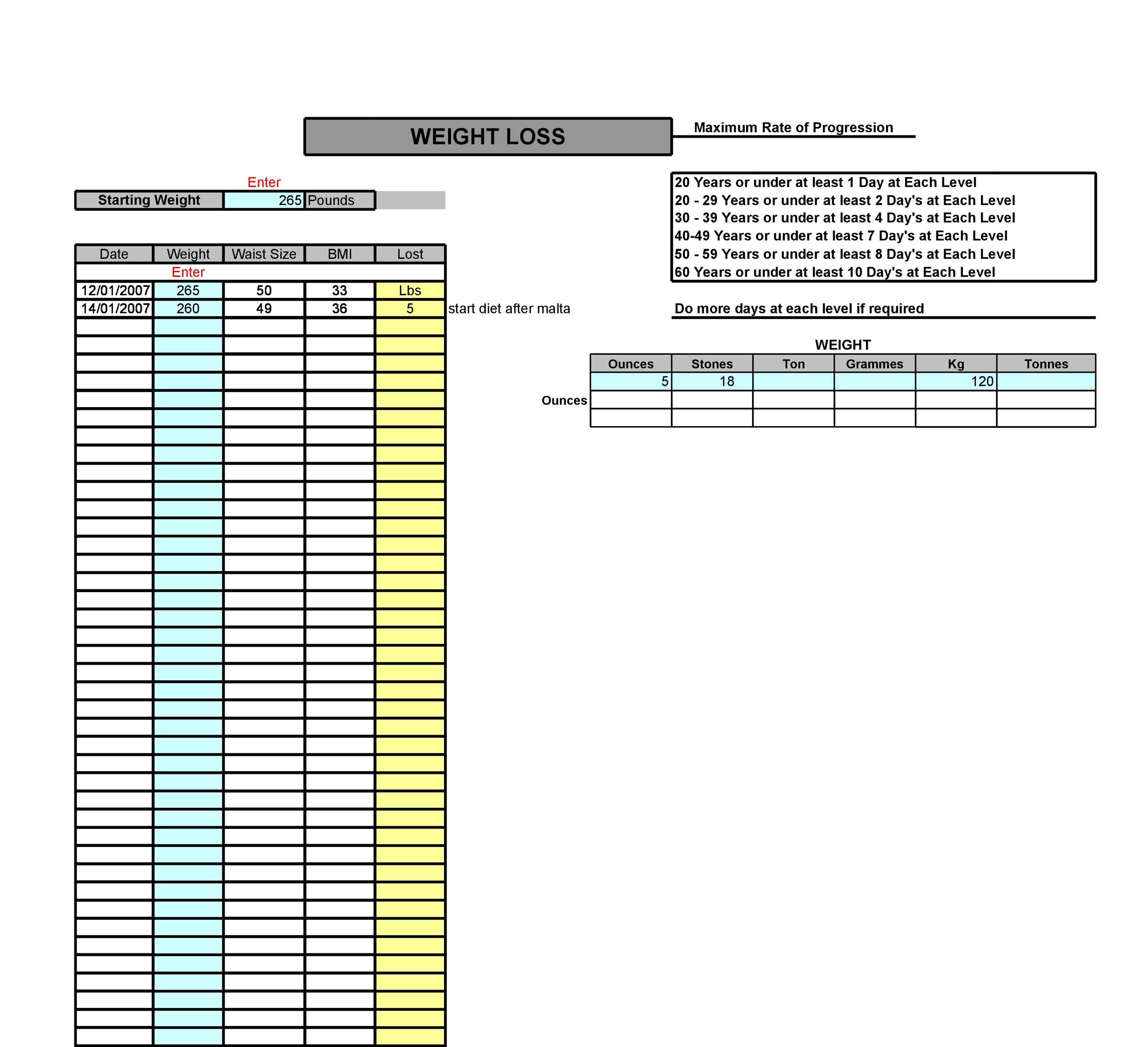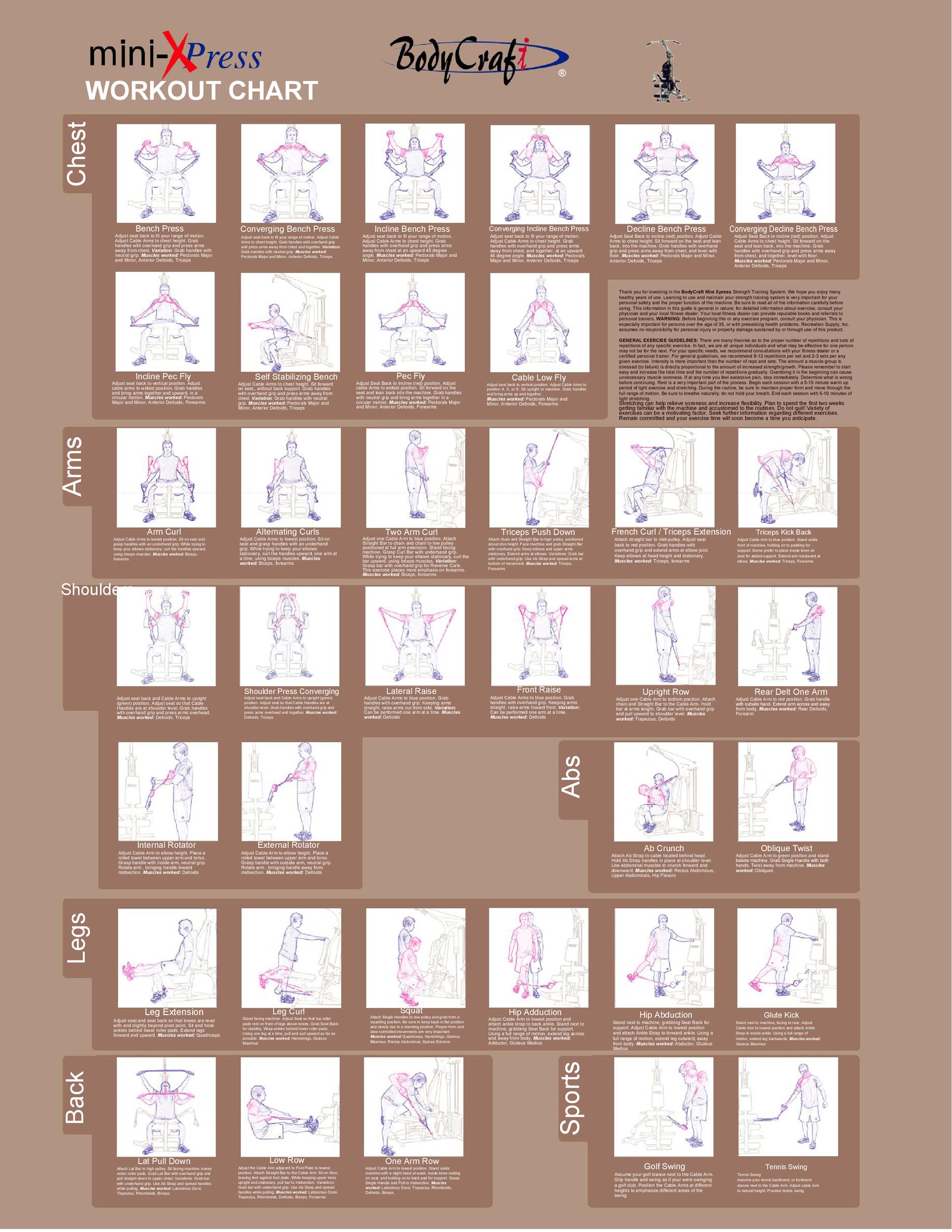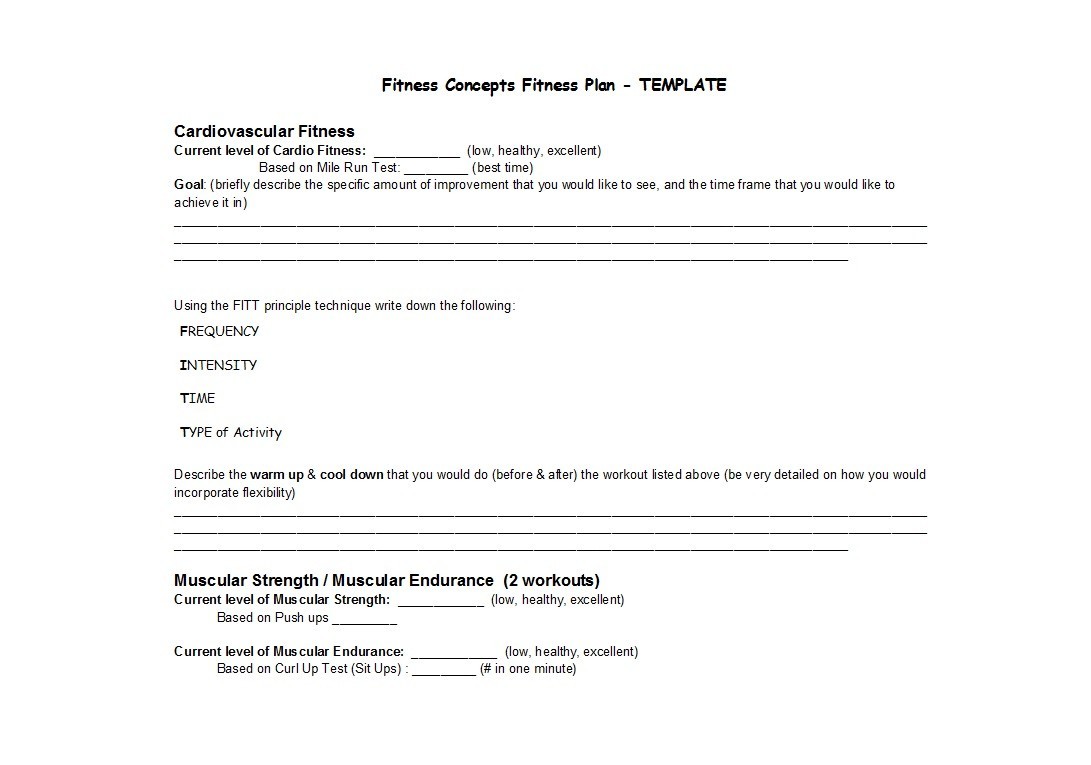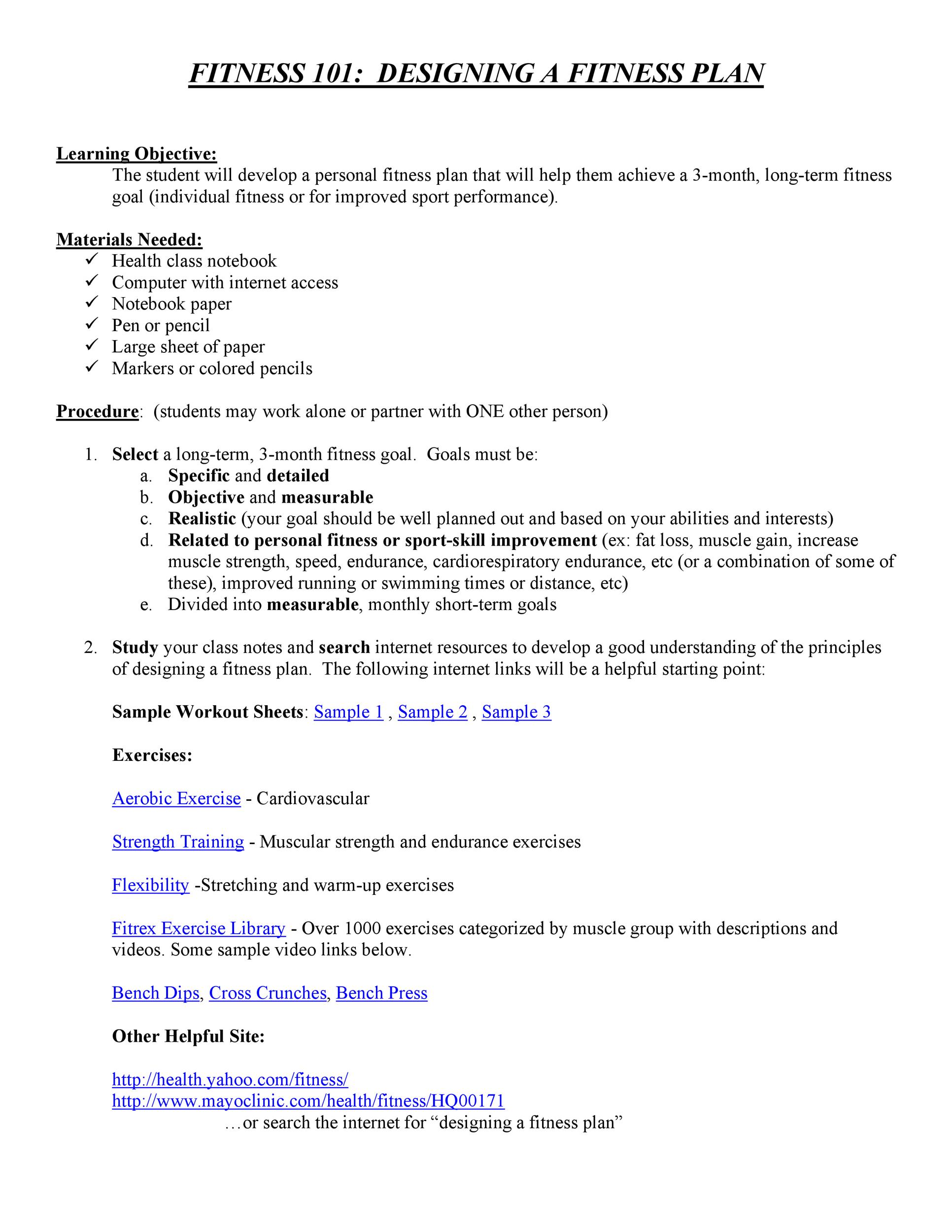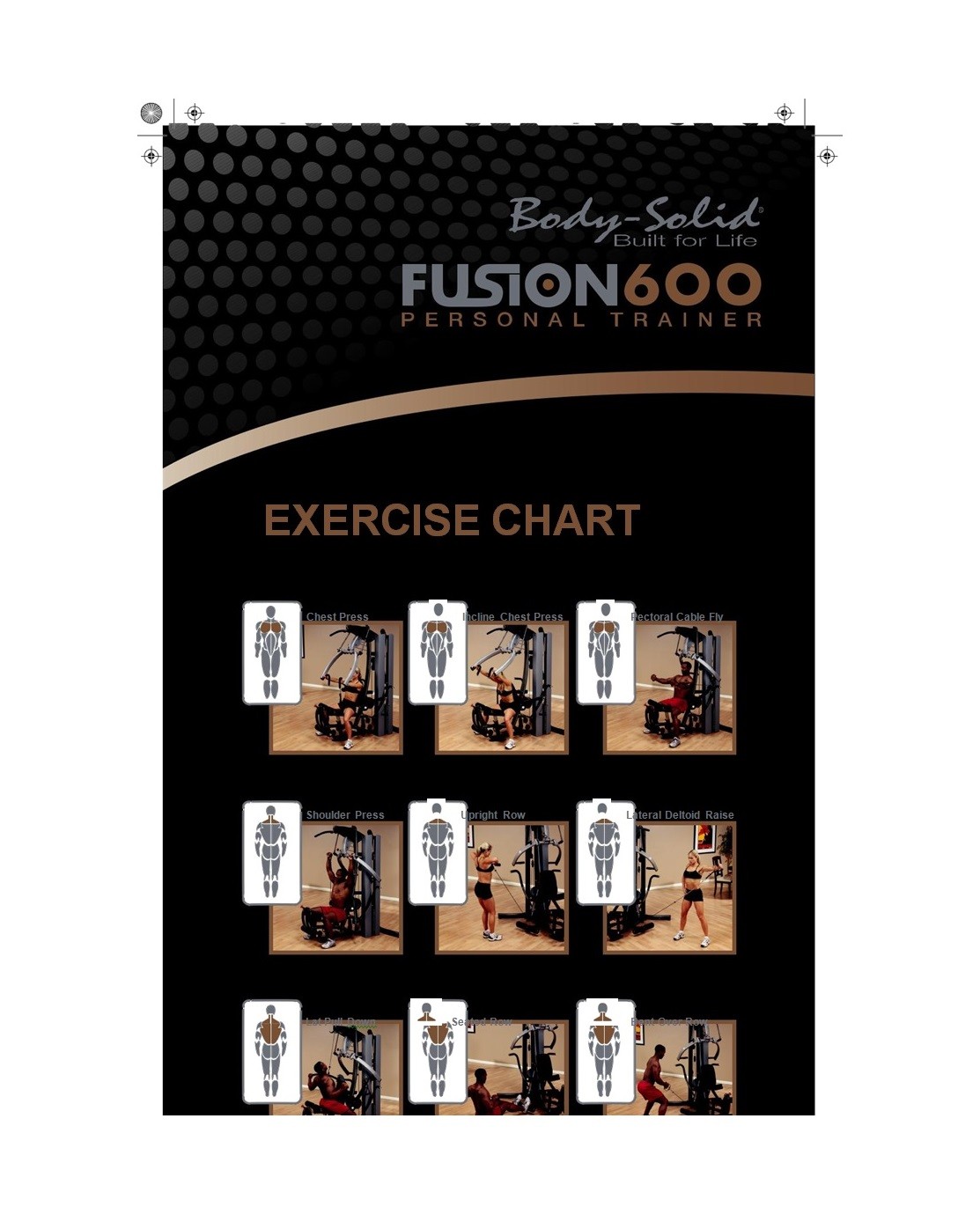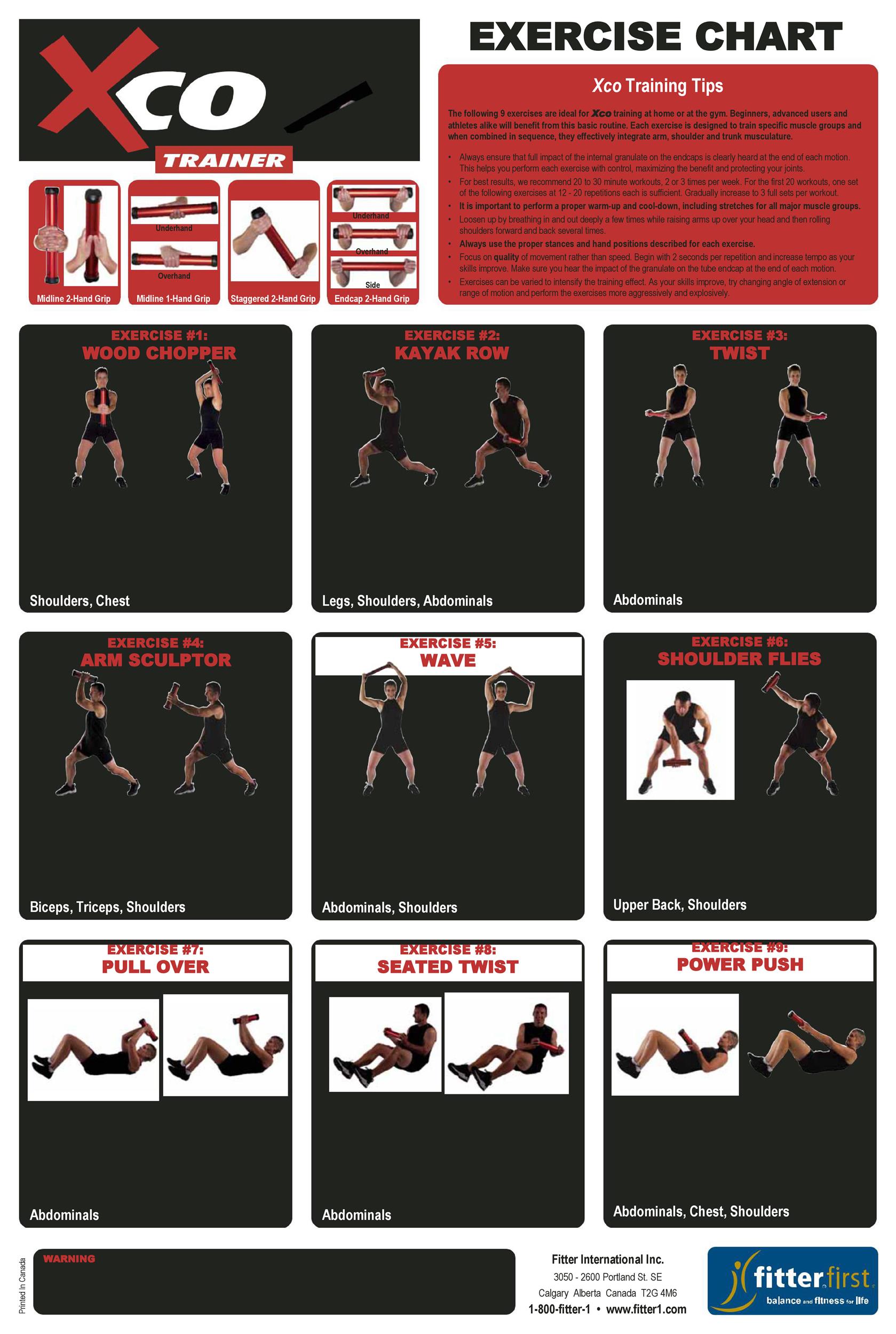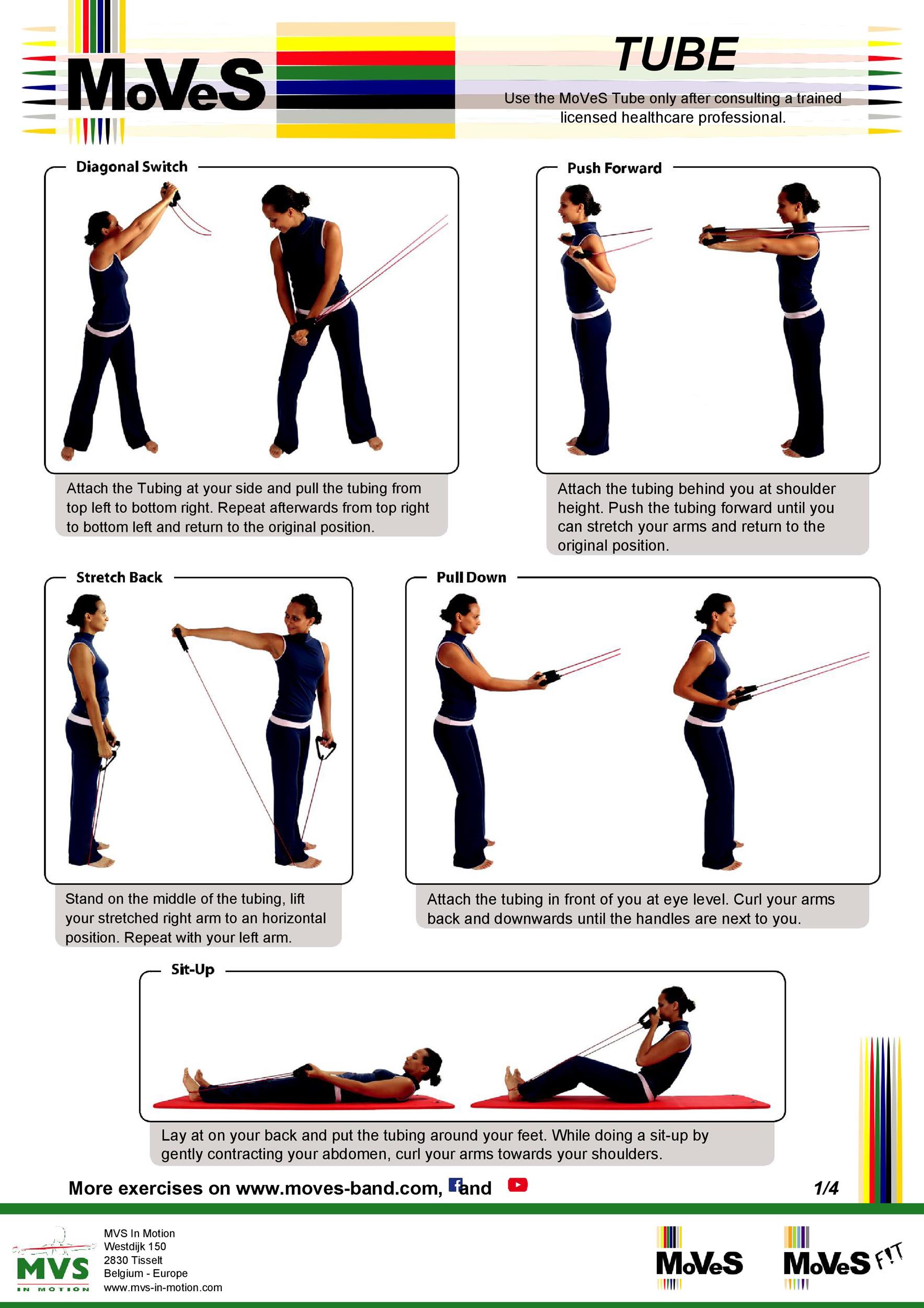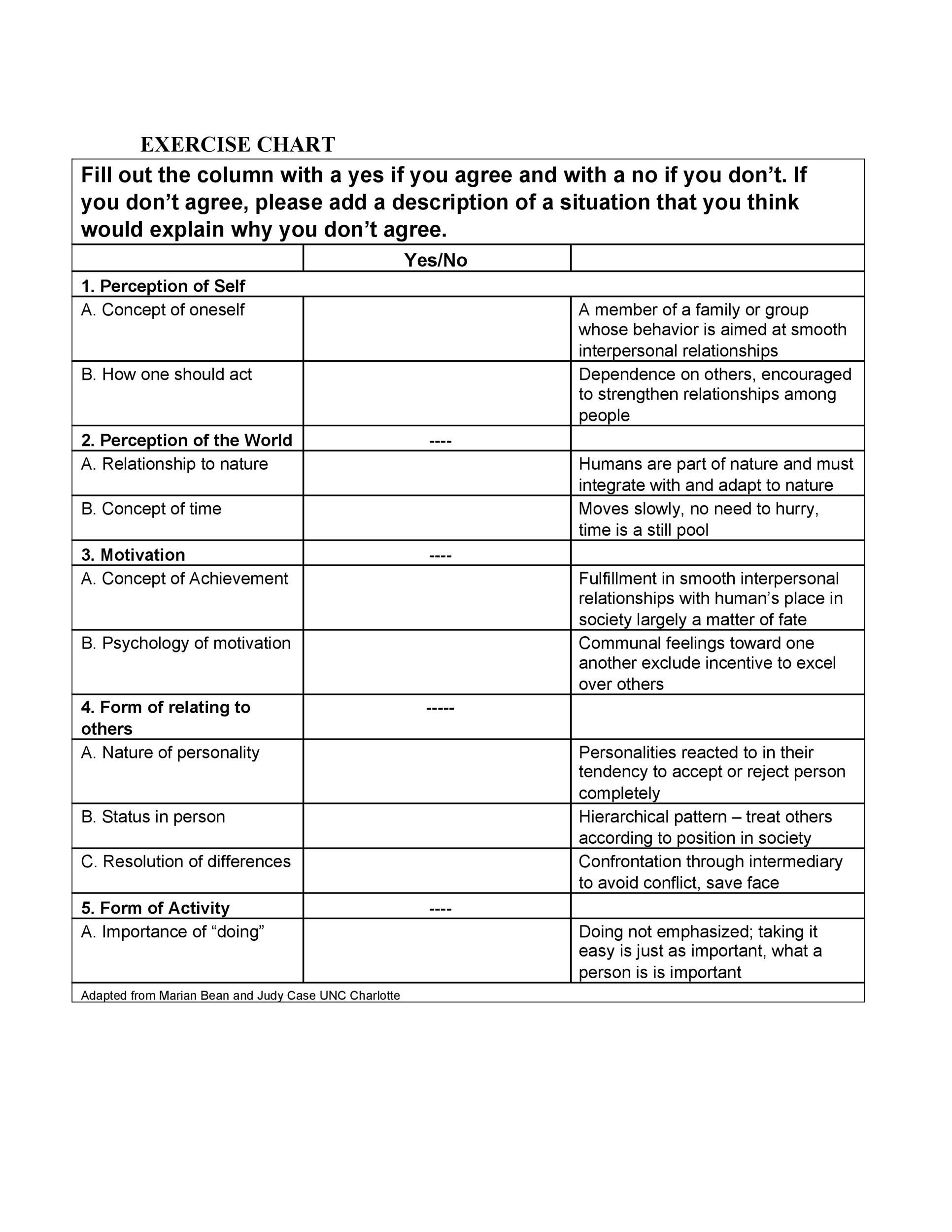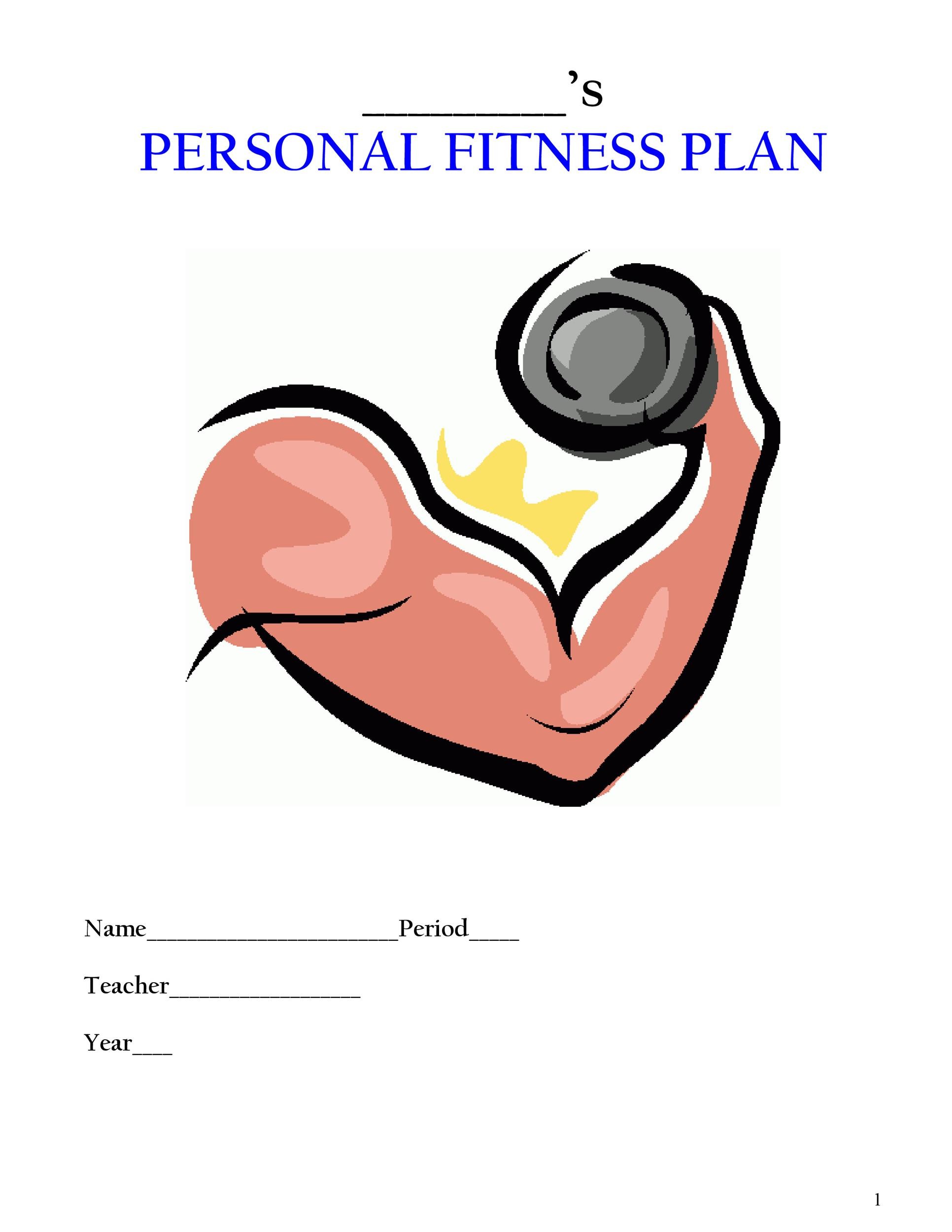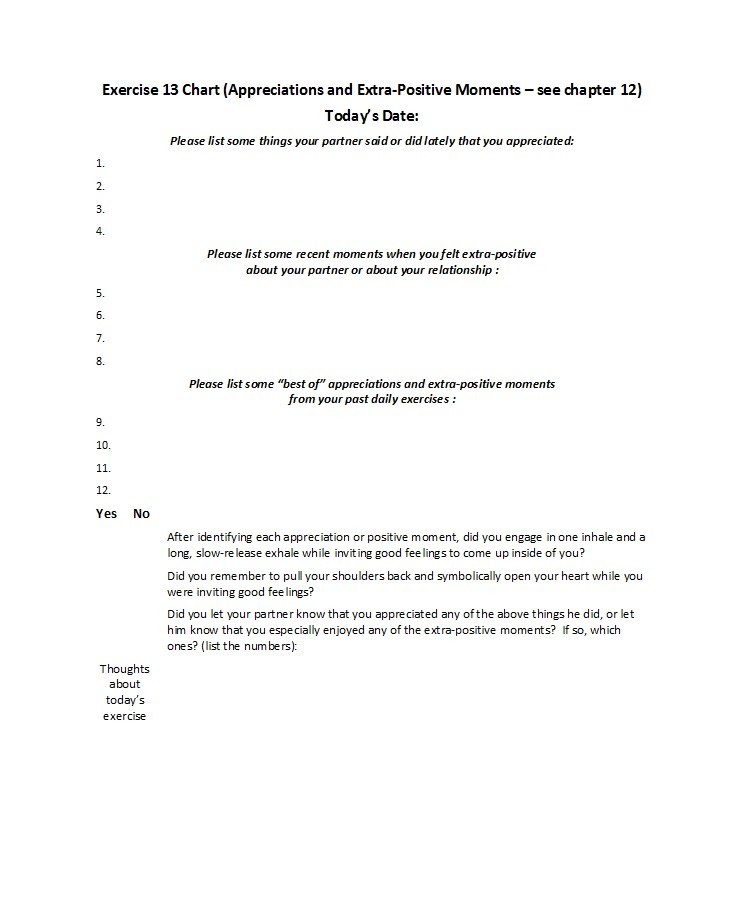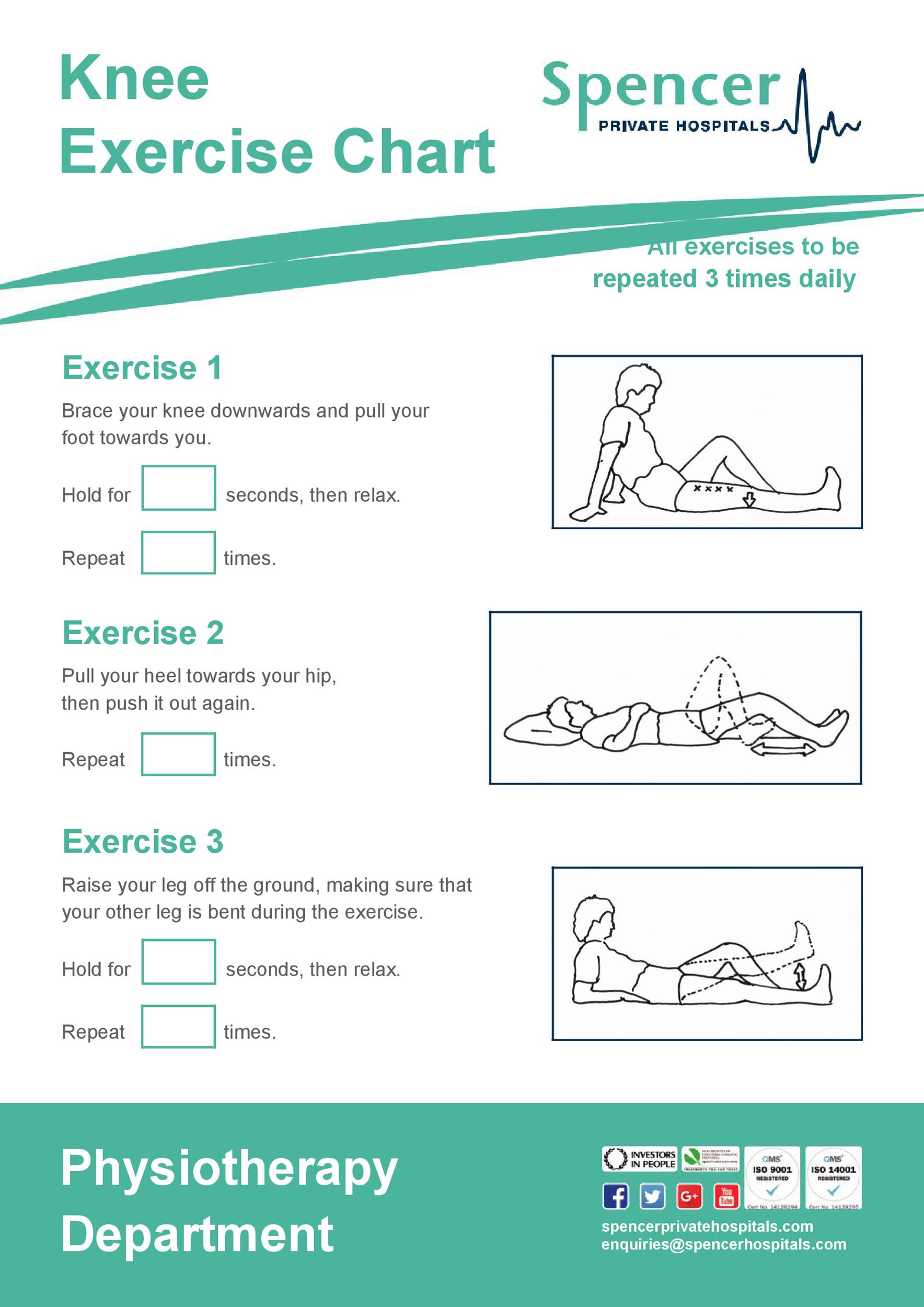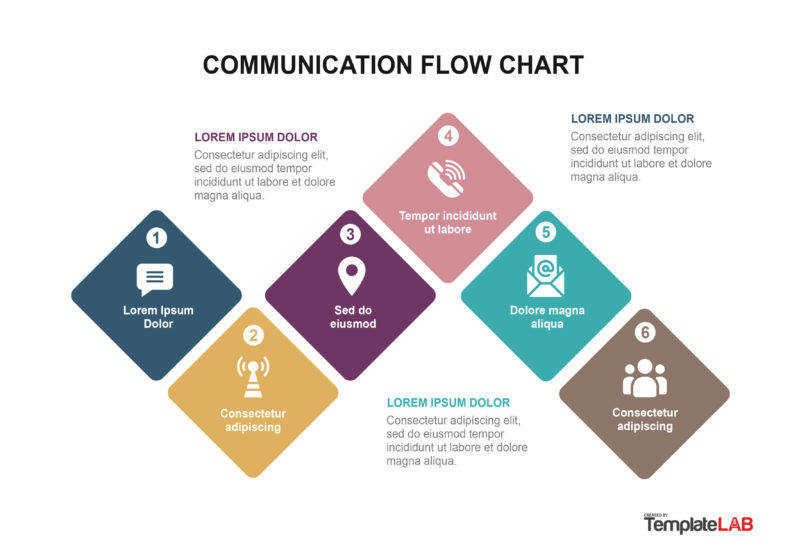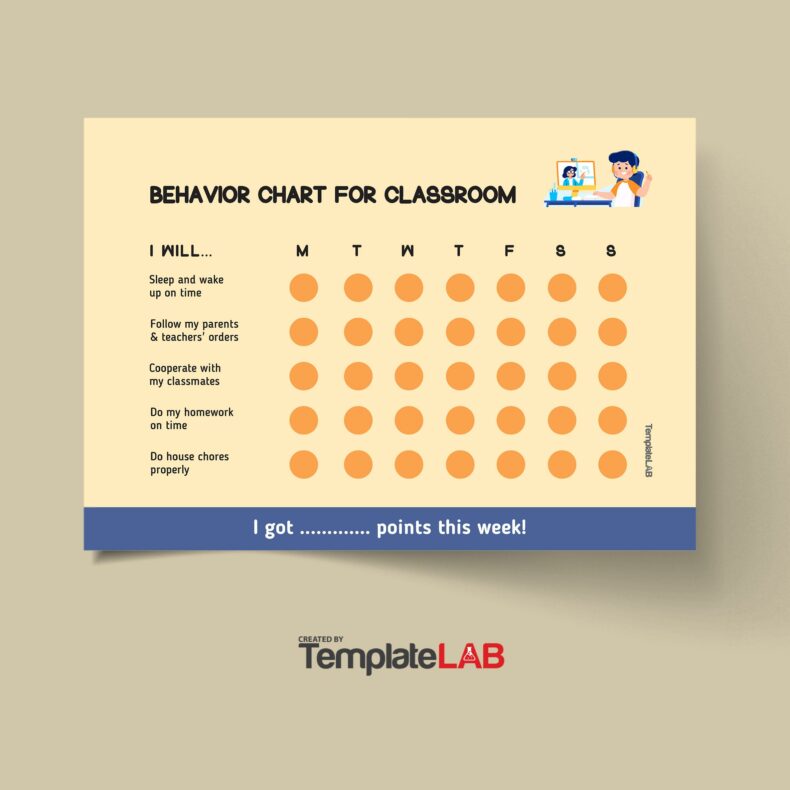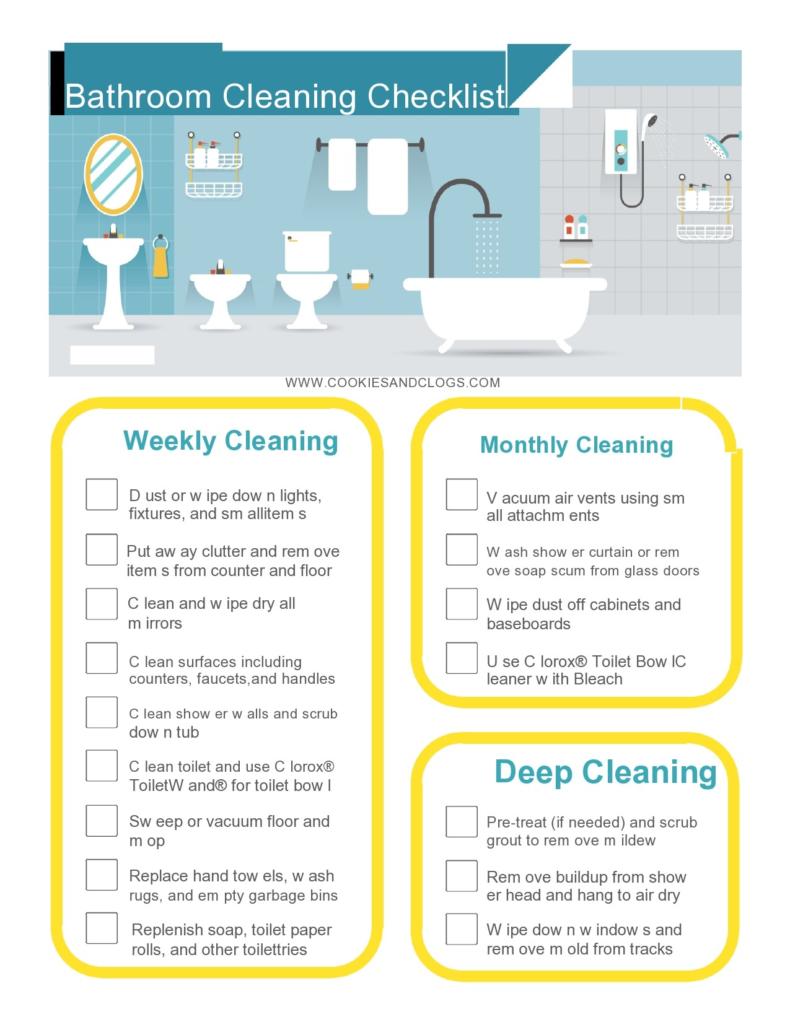People these days can’t find the time to have good workouts, which is essential for healthy living. You can’t really blame them because they have responsibilities to afford the amenities of a modern world. Not that people don’t care, they just don’t have the time. But with some effort, you can still manage to squeeze in some time for exercises every week by apportioning the exercises into manageable chunks. To accomplish this, you need an exercise chart hanging somewhere in your home to keep track of your exercise schedules.
Table of Contents
Exercise Charts
Building your exercise routine
There’s more to exercising than mere movement. An effective workout should give you the ability to burn fat, build muscle mass, and improve your performance. All these depend on the scheme that you set for yourself, from how you arrange your exercise routines, and how the scheme challenges you.
It is, therefore, important before diving into some new workout, to know certain steps in the design of the best workout routine. Before you can start using an exercise chart or any other kind of fitness plan templates, think about your exercise routine first. Here are some tips to guide you:
- Think about the specifics
Work on a specific body part or muscle group. This is often referred to as the “principle of training specificity.” The idea may sound very basic, but it’s generally the foundation for an effective exercise routine. The primary goal here is to find which exercises you need to make up your workout routine. - Create your schedule
You need to schedule your workout sessions. Most prioritize their jobs before their visits to the gym and this may involve fewer workouts each week. Here are some recommendations when scheduling your workouts:
If you have fewer days for the gym, make sure that each workout involves your whole body.
If you have more days in the week to do your workouts, break your routines up to avoid overtraining.
It’s better to divide your routines based on movement types instead of on body parts.
Whatever schedule you create, make certain that you always have enough rest.
Never engage in back-to-back high-intensity workouts. - Check out your gym
Not all gyms cater to exercises that you’ve chosen for your workouts. Many gym users don’t think or care about the gym’s overall environment and layout in their selection of exercises. Neither do they think about protocols. Users just use equipment randomly as most of them don’t have fixed routines.
As such, most gym equipment are always occupied so you may choose to stick with a single piece of equipment each session rather than doing the rounds on different equipment. Moreover, rotating your routine may tick off some of the gym-goers. - Think about your workout and rest scheme
Usually, a fitness goal defines how many reps and sets you perform for each exercise. But remember that when you reduce the number of reps per set, you have to increase the load you’ll lift. Also, take into account the amount of rest you need and this depends upon how much weights you lift. - Change it up
You may have developed the perfect workout routine. But in order to keep the benefits going, the routine must constantly evolve. Generally, the human body will adapt to any stress it’s subjected to in around 12 – 14 weeks. It is, therefore, necessary to make changes in your routine often to avoid “plateauing.”
You don’t have to ditch the entire routine but can perform the same with different equipment. Change your set and rep schemes as well or simply change the variations of the exercise you’re performing.
Exercise Templates
Tips for creating your own exercise chart
One thing great about an exercise chart or an exercise template is that it can help you remember your routine. This is especially true for strength exercises because it’s particularly hard to remember what weights you have used and the number of repetitions you have done each time.
Fitness Plan Templates
Exercise and fitness chart can even serve as motivation for you to do your daily exercises. Just glancing at the chart and seeing many empty columns is a reminder that you have been recently neglecting your exercises. Creating your own exercise template would give you the option to personalize it to suit your needs. A great way to make a customized exercise chart is by using Microsoft Word. Here are some steps to help you out:
Change the layout of the page
- Click the “File” tab then select “Page Setup.”
- Change the orientation of the page to landscape.
- Set all of the margins at half an inch.
Insert a table
- Click the “Table” tab.
- Select “Insert” then select “Table”
- Select the number of columns and the number of rows.
- Don’t input any information on the first column.
- Type in numbers into the cells of the first row for the days of the month.
Create your aerobic workout schedule
- Select the whole second row then right-click it.
- Select “Merge Cells” to create one very long cell.
- Type in “Aerobic Exercises” into this merged cell.
- On the first column of your exercise chart, enter the aerobic exercises you will perform on each row.
- Since aerobic exercises are very rhythmic, you can perform them on extended periods of time.
- For every aerobic exercise you have finished, write the number of minutes you have spent exercising in the corresponding cells.
Create your strength workout schedule
- Select the next row then merge cells the same way you did in the previous section.
- Type in “Strength Exercises” into the merged cell.
- Choose up to 10 strengthening exercises you will perform then type their names into the first column.
- After each of the exercises, write down how heavy the weights were and the number of times you lifted them.
Create your flexibility workout schedule
- Again, merge cells in the first row of your fitness plan template and type in “Flexible Exercises.”
- Input the names of the stretches that you will perform in the next column.
- If you need to add extra rows, just select a row and right click on it then choose “Insert Rows.”
- Check the correct row after you complete each stretch exercise.
Try to change the list of exercises in your fitness plan template every month. This gives you variation and a much better workout. Make it a point to save your previous exercise templates too. Having everyday notes on your workouts serves as a reminder on how you started along with your progress.
Fitness Charts
Benefits of exercising regularly
It’s a proven fact that regular exercises and physical activities are necessary for a healthy life. Everybody will benefit from exercise regardless of sex, physical abilities or age. Using an exercise or fitness chart will help you on your health journey. Here are some benefits of exercising regularly:
- It helps you maintain a healthy weight
This activity is the best way to prevent and lose excess weight. Engaging in physical activities burns calories and the more intense your activity is, the more calories you’ll burn. Although regular sessions at the gym are highly recommended, many of us don’t have the time to do so. But this should cause no worry.
You can always find ways to do physical activities like jogging, walking, cleaning your house, and so on. These may sound mundane but they’re still better than doing nothing at all. The main key here is consistency. - It helps combat health diseases and conditions
Physical activities in your life can boost high-density lipoproteins or “good cholesterol” and decrease unhealthy triglycerides. More HDL and less triglycerides ensure the smooth flowing of blood and consequently, lessens the risk of many cardiovascular diseases.
Aside from this, regular exercise can also manage and prevent many other health conditions like stroke, high blood pressure, metabolic syndrome, type 2 diabetes, anxiety, depression, several types of cancers, arthritis, and others. You may also notice your cognitive functions improve. - It improves your mood
When you engage in physical activities, different brain chemicals get stimulated which make you feel better and happier, less anxious, and more relaxed. Regular exercises also make you feel good about how you look and can boost self-esteem and confidence. - It gives you a boost of energy
It should come as no surprise that regular exercise can improve muscle strength and give our endurance a boost. This happens because physical activities allow more nutrients and oxygen to get delivered to our tissues and this helps the circulatory system function more effectively. Improvements in the functions of your lungs and heart mean more energy to deal with your daily chores. - It promotes better sleep
We’ve all had this experience. A tired body usually makes us fall asleep faster and better and can deepen our sleep more. But don’t exercise before bedtime as you may feel too energized to fall asleep. - It’s a fun and social activity
Don’t get too serious about doing your exercises. Add an element of fun in your routines. Given a chance to relax, perform activities which make you feel happy like a leisurely walk in the park or jogging around the neighborhood with friends. Physical activities can also give you the chance to connect with your family and friends in a healthy and fun way.

